Chapter Four Utility Preferences — A Reminder x

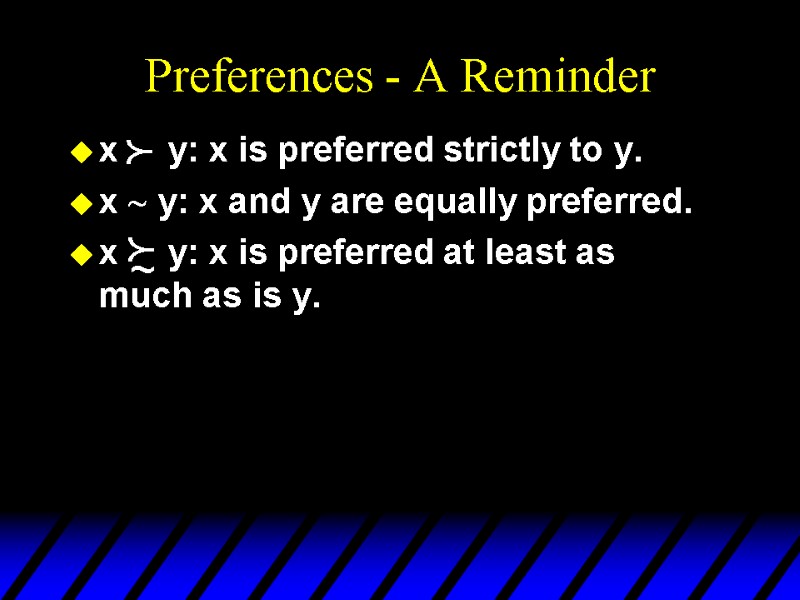
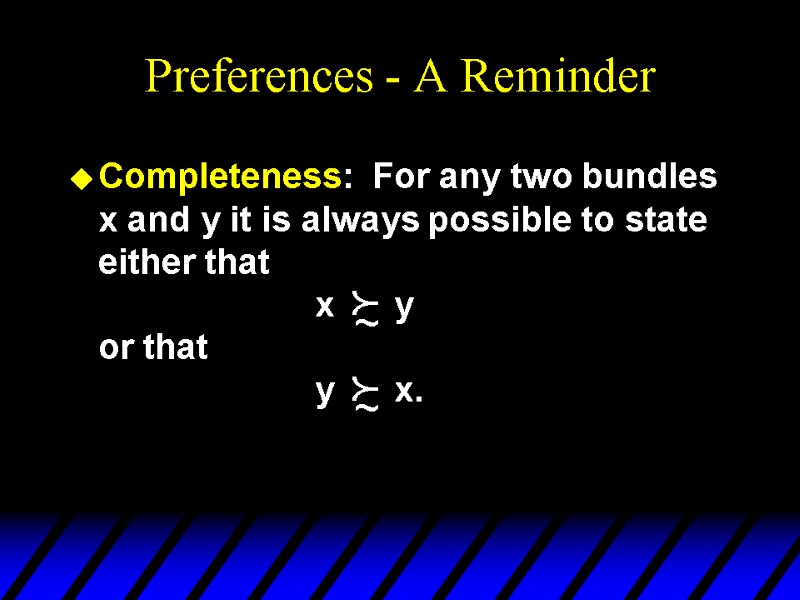
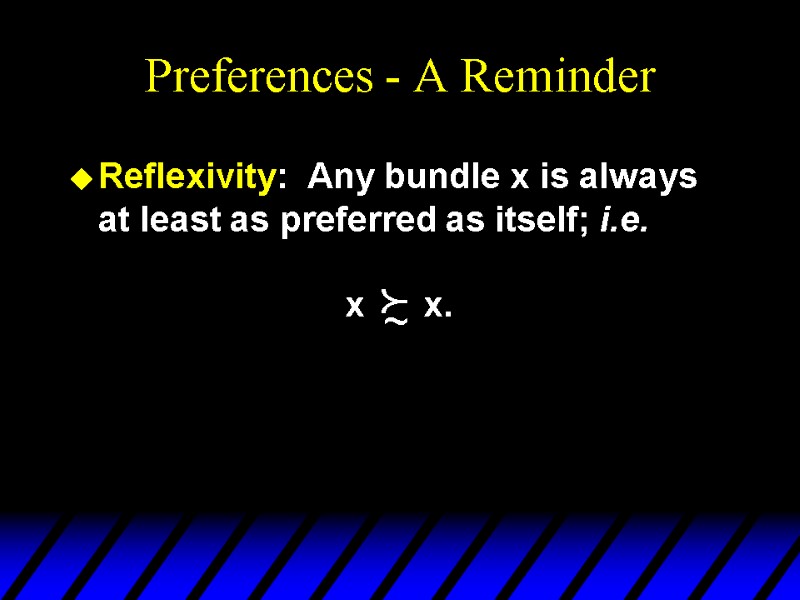
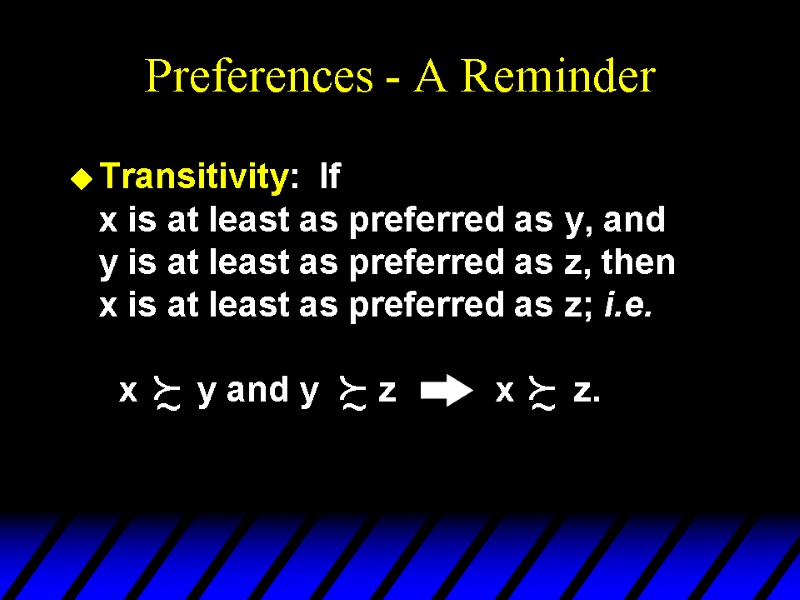
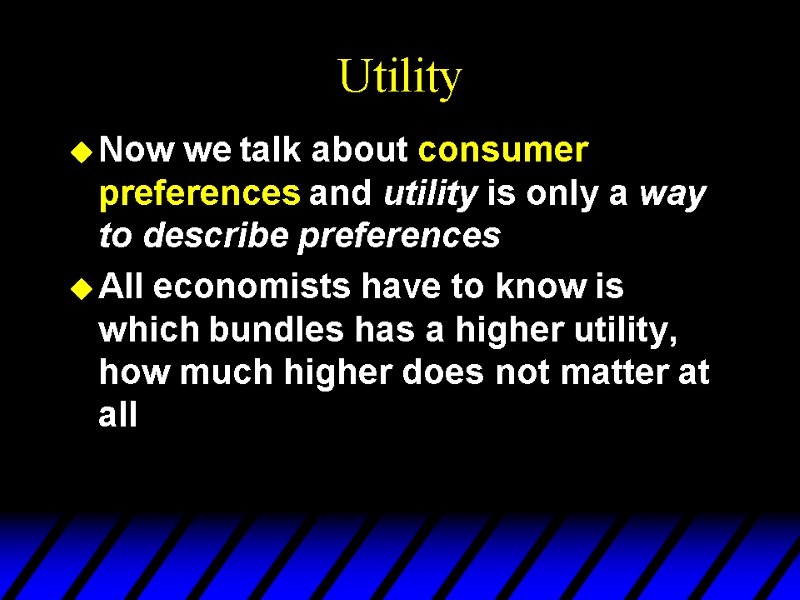
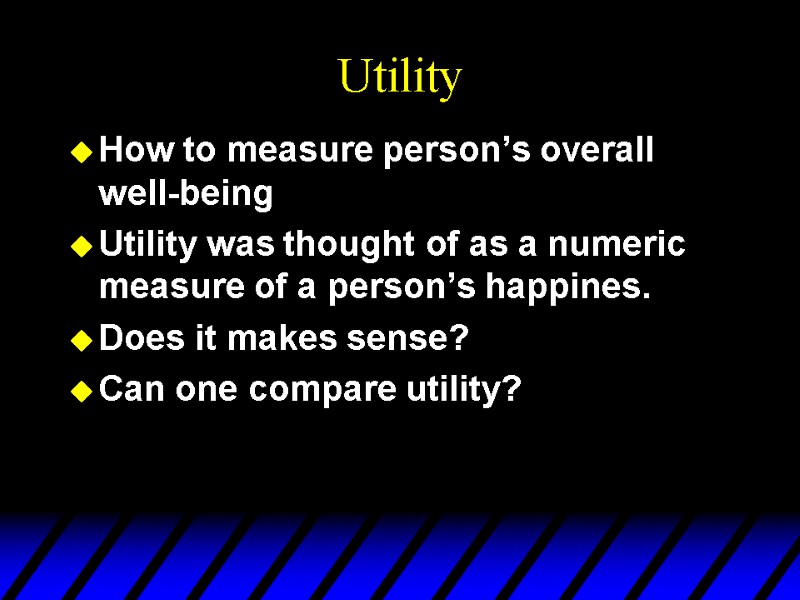
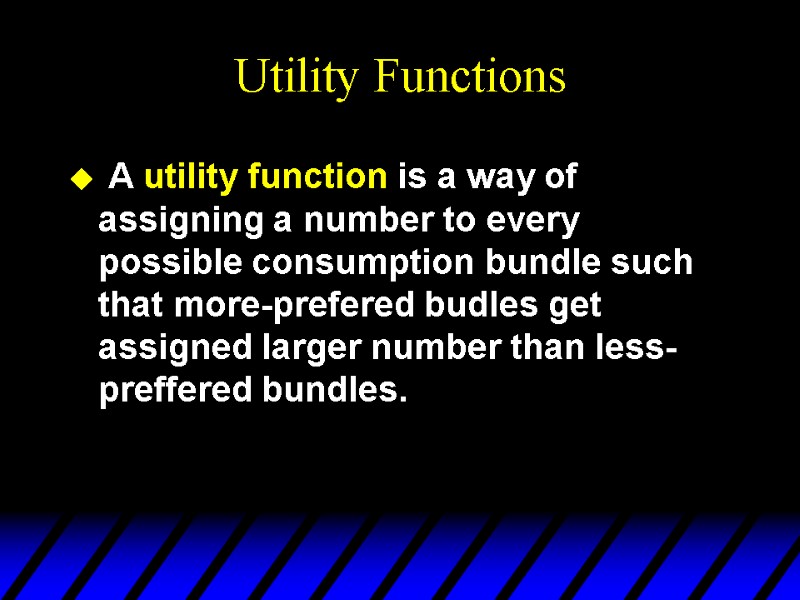
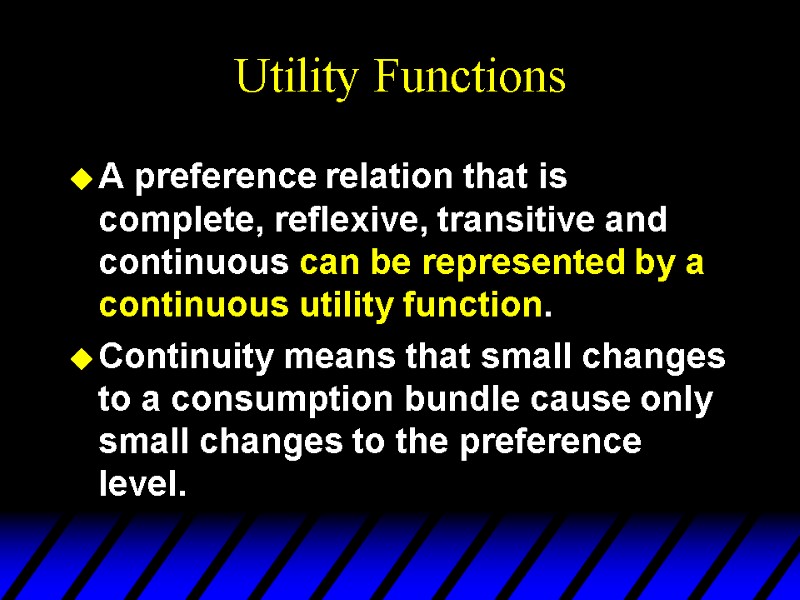
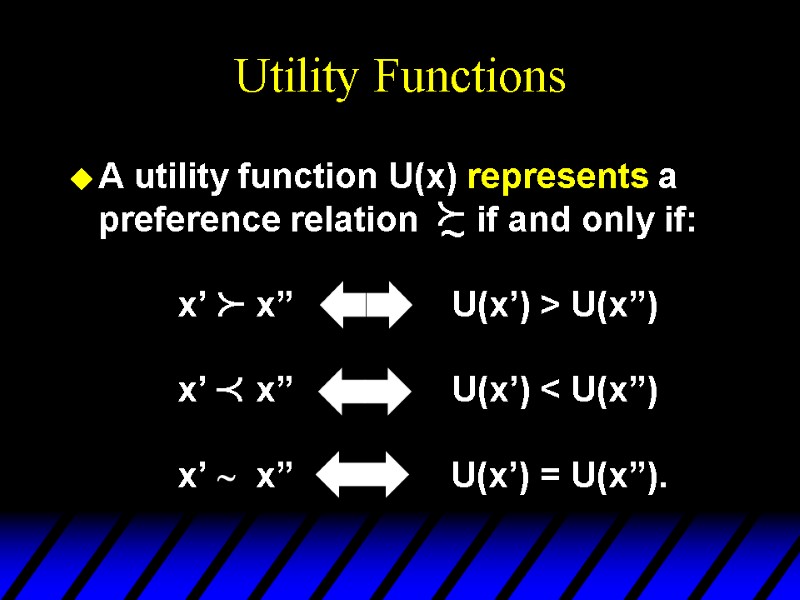
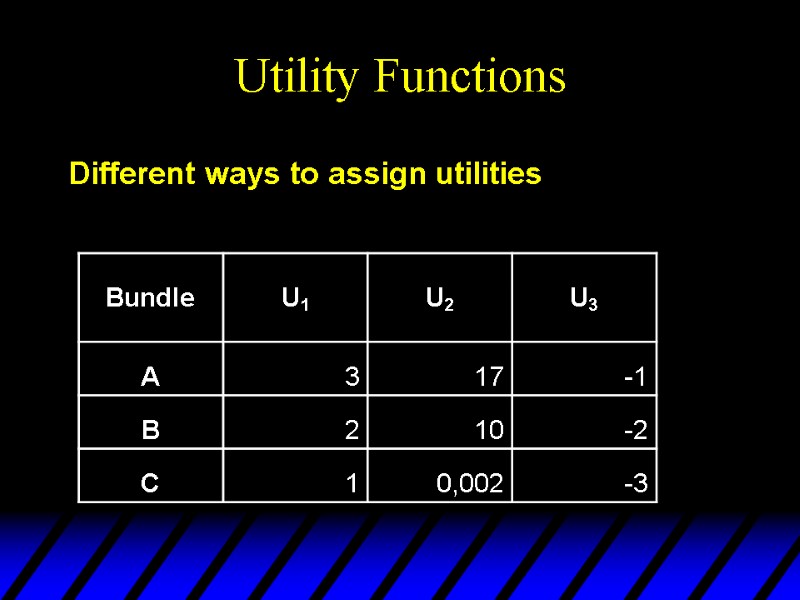
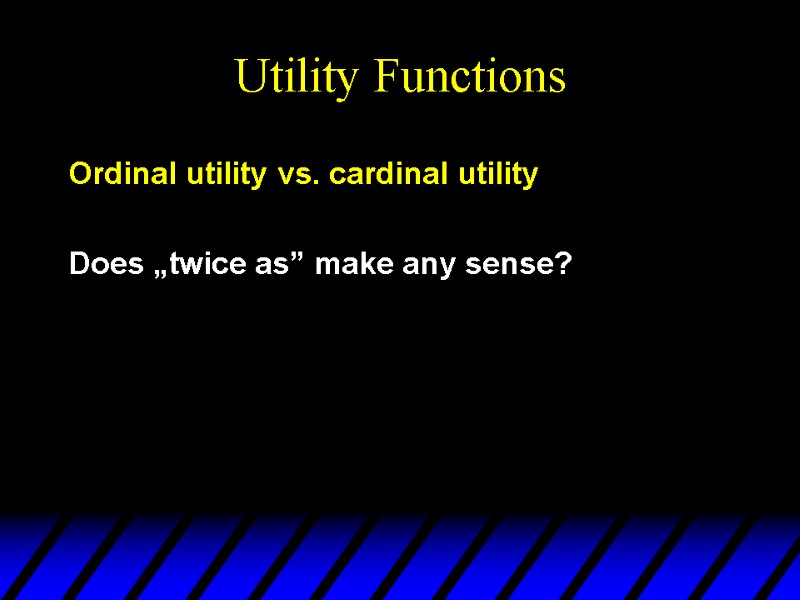
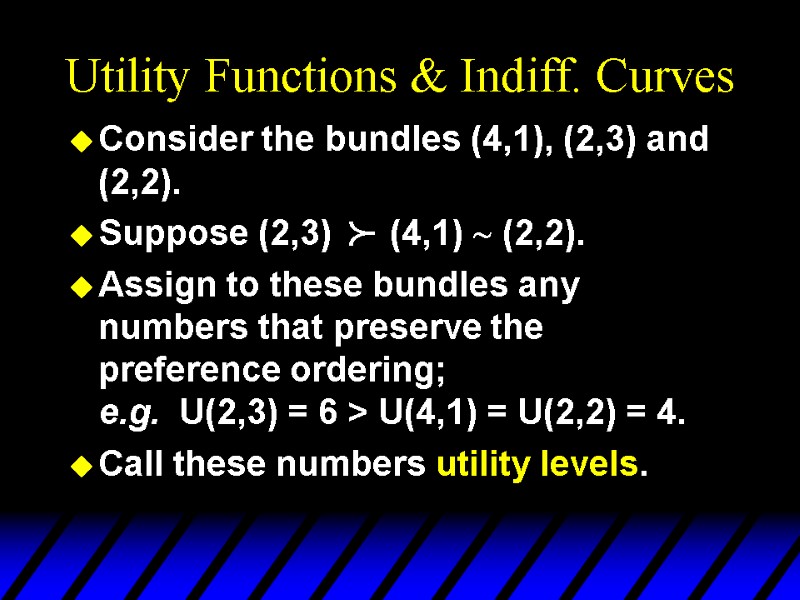
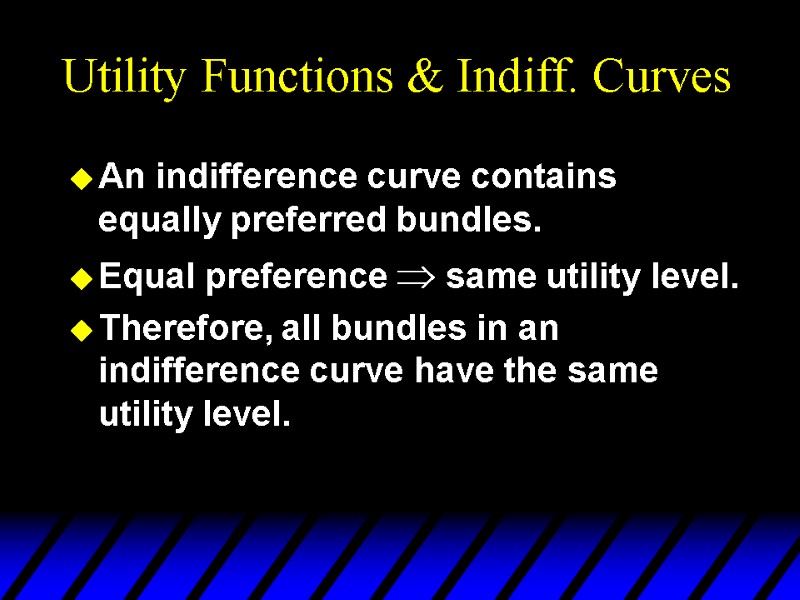
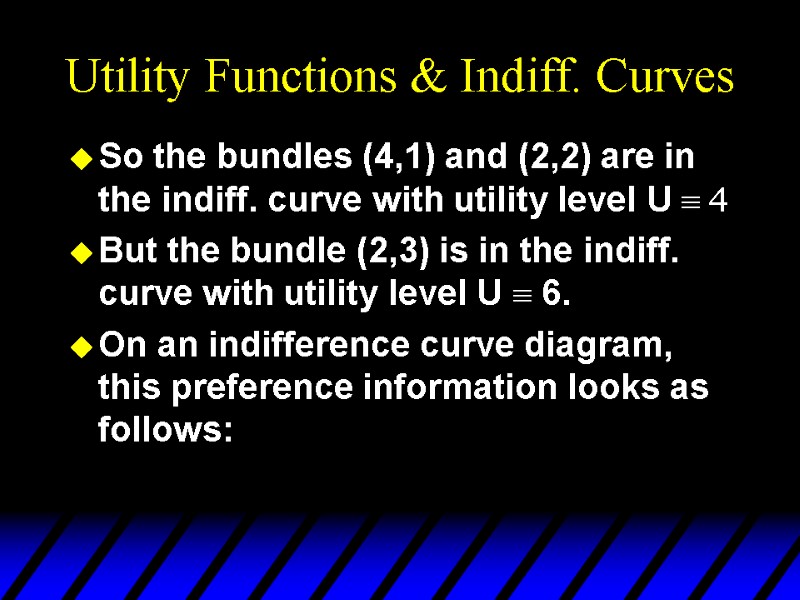
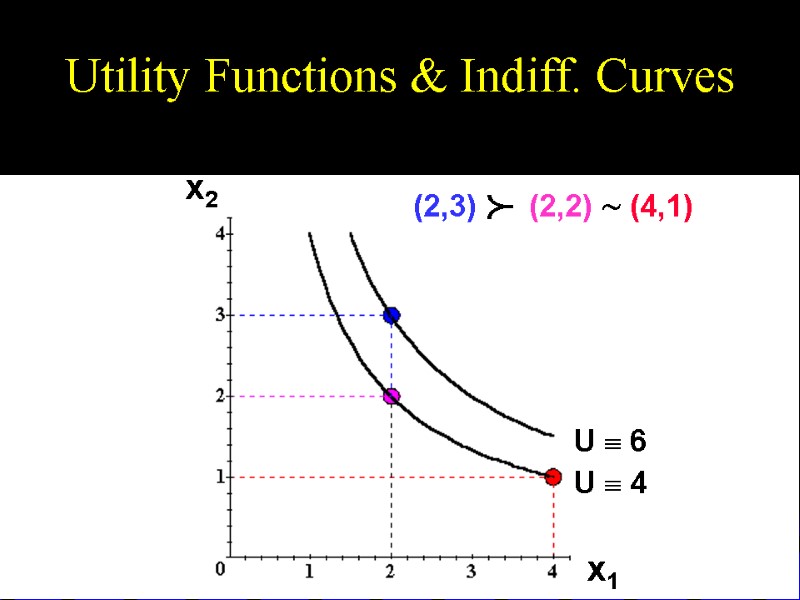
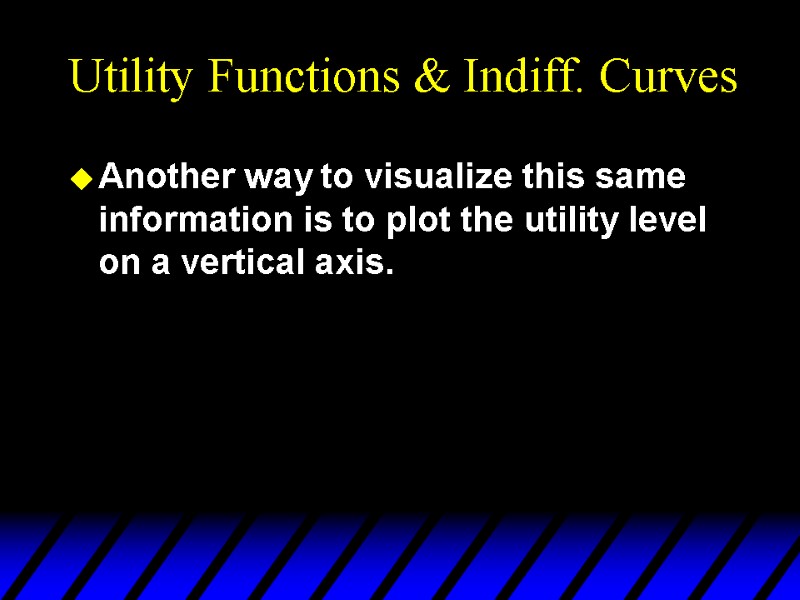
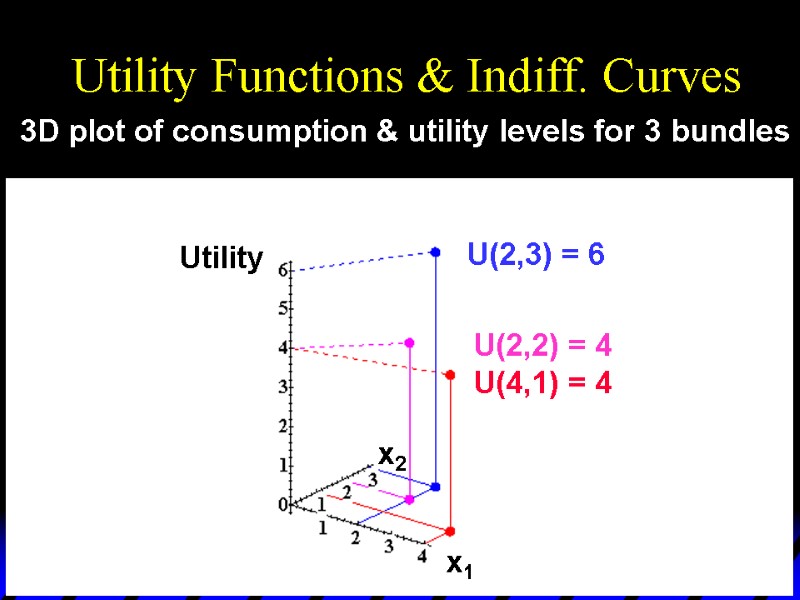
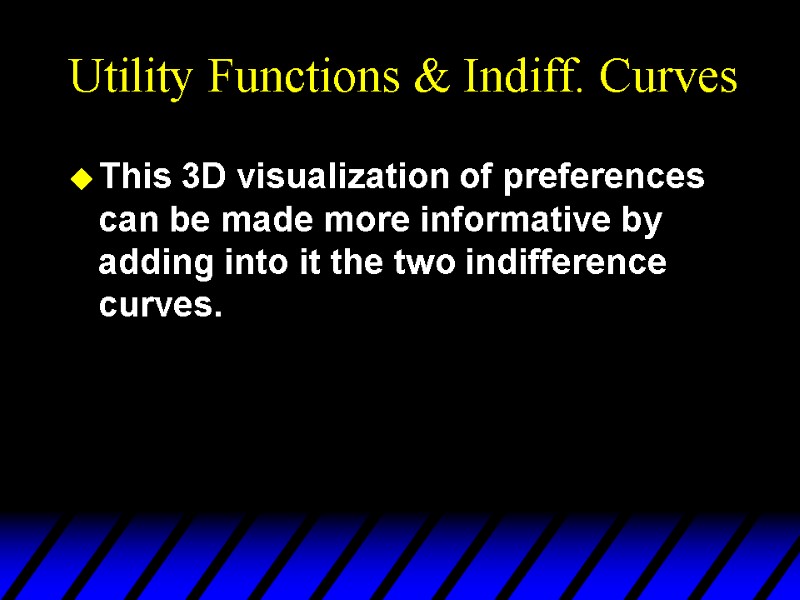
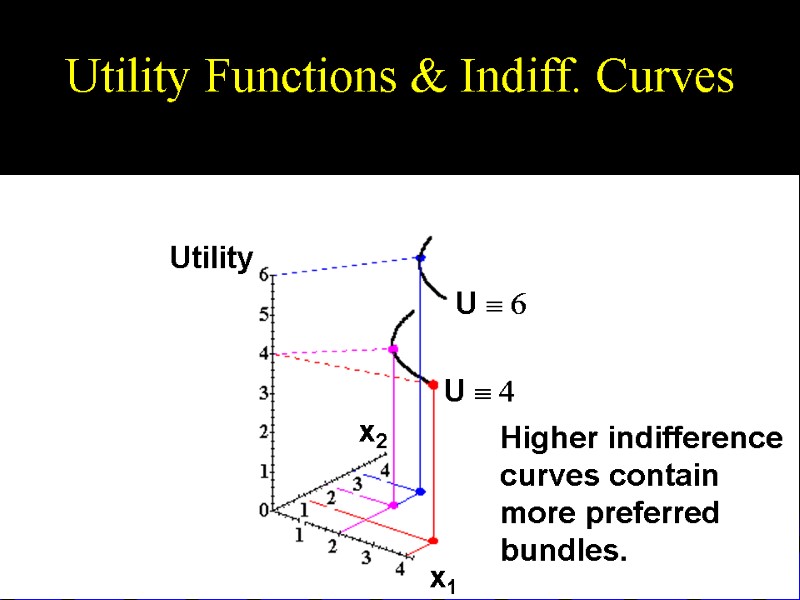
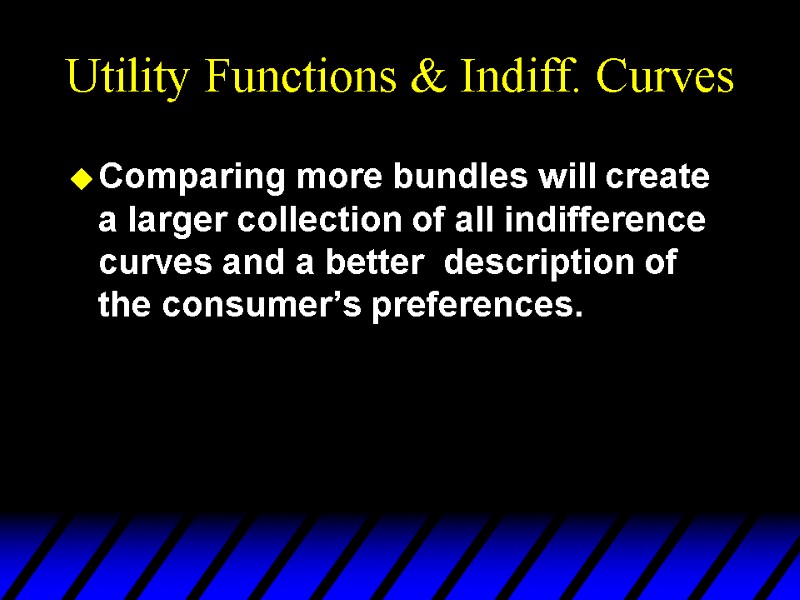
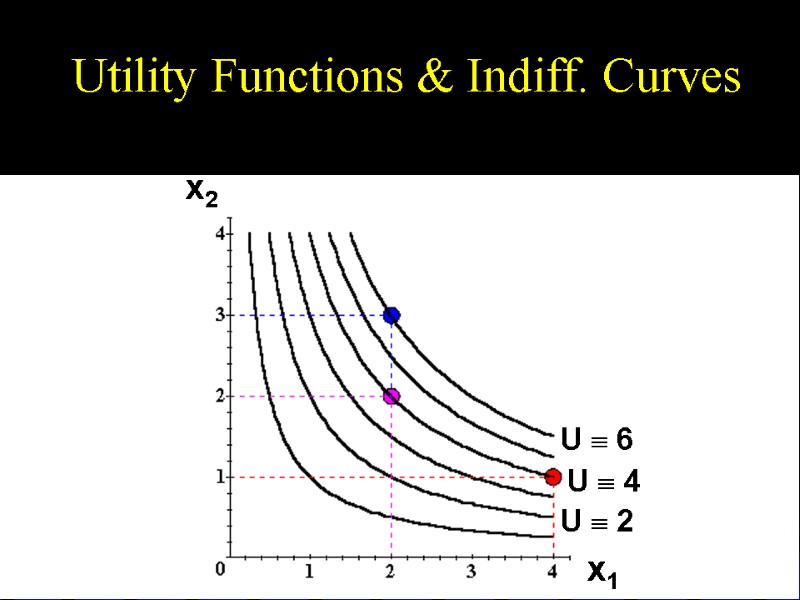
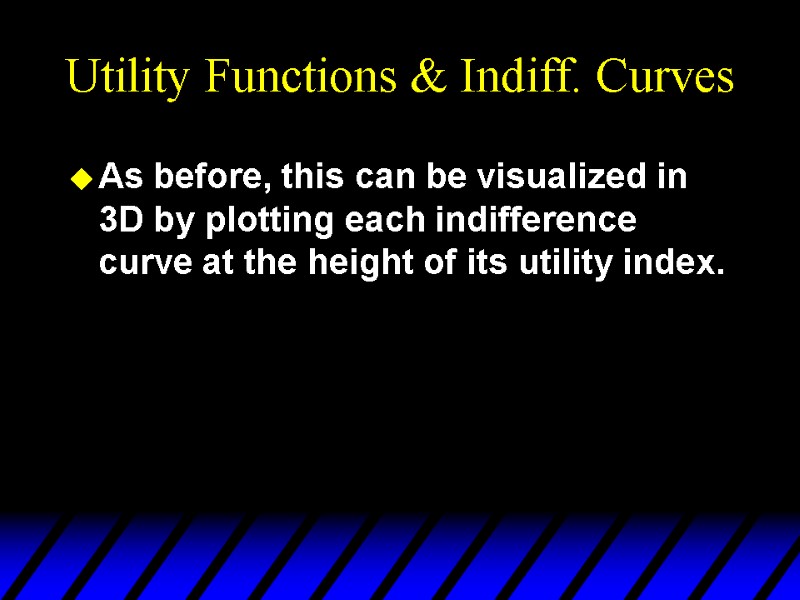
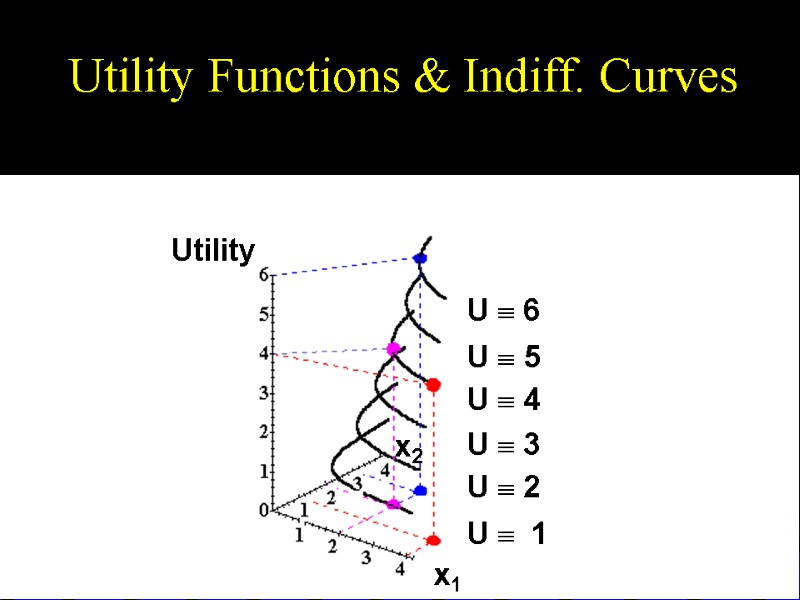
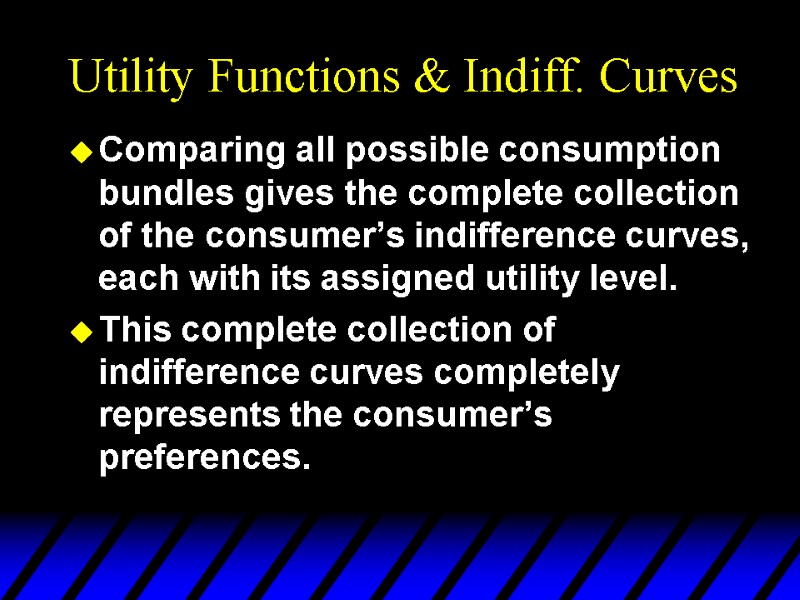
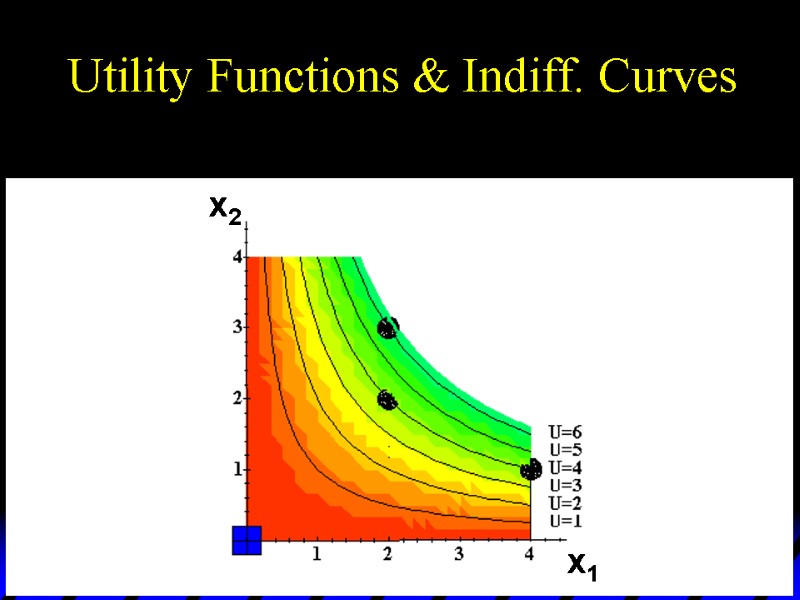
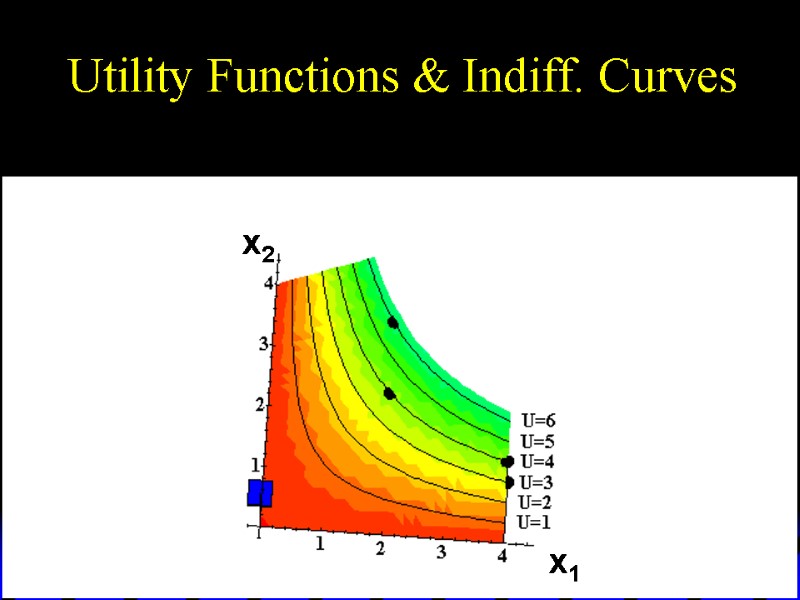
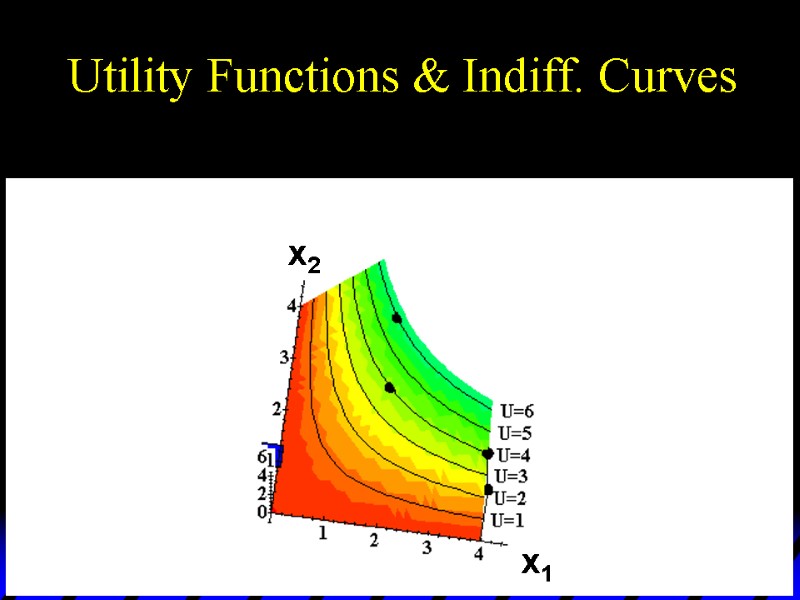
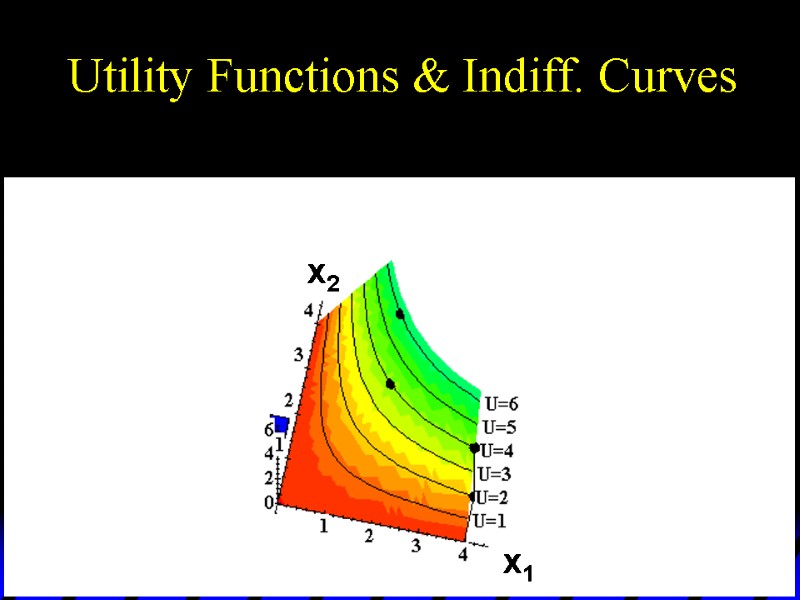
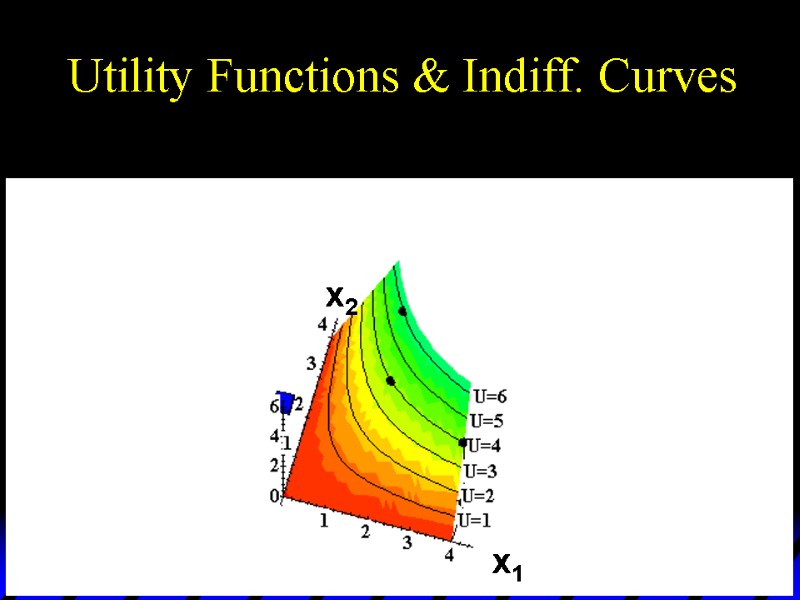
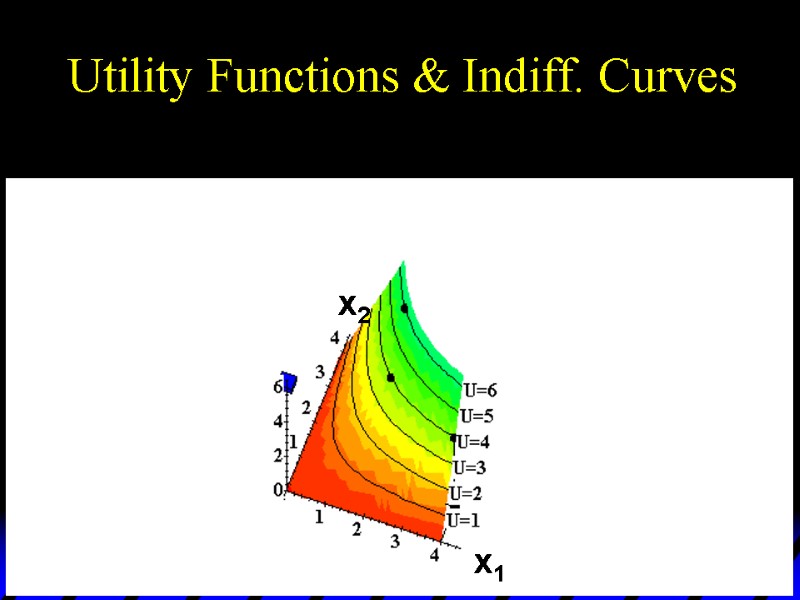
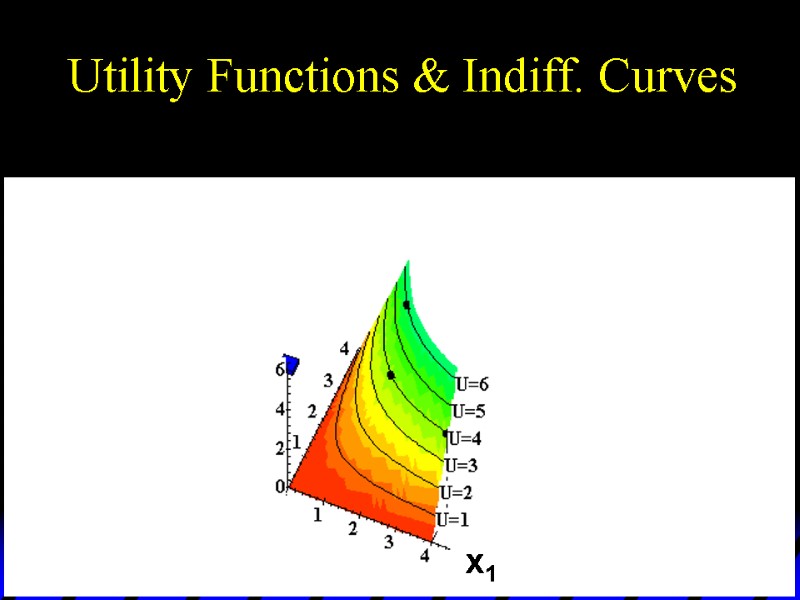
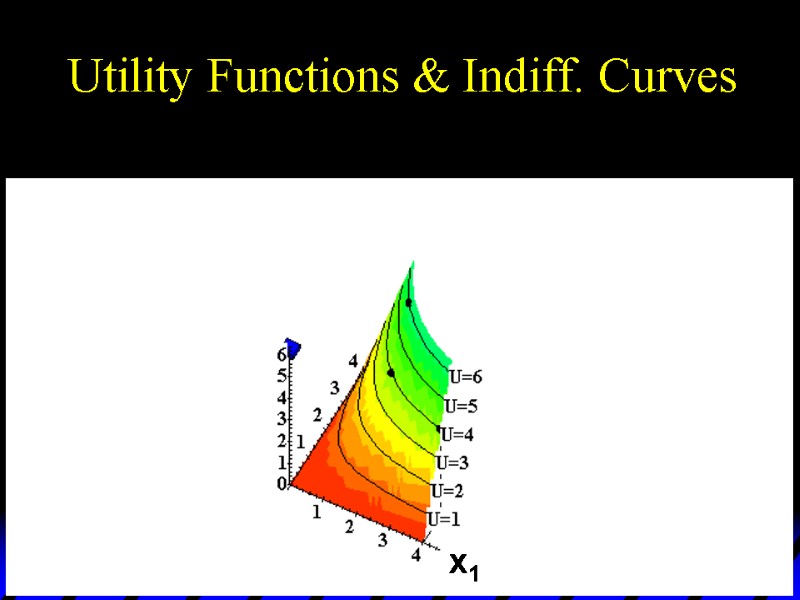
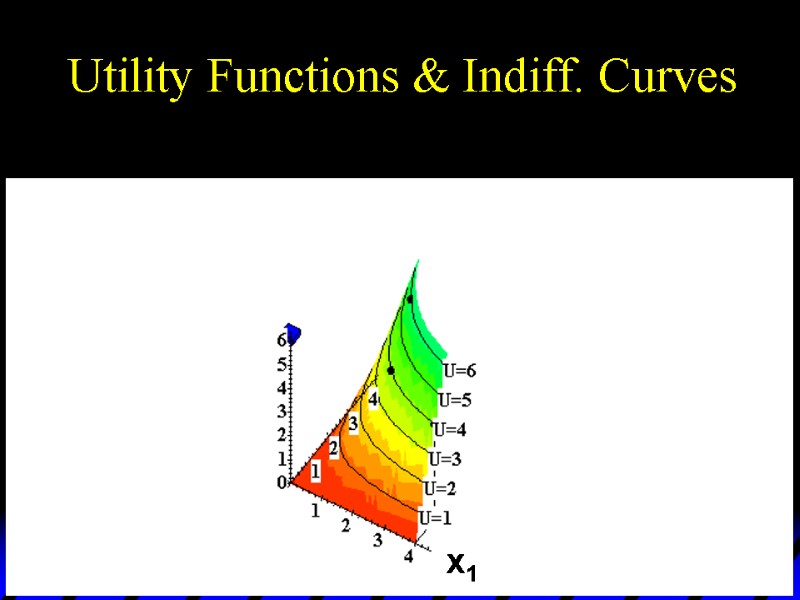
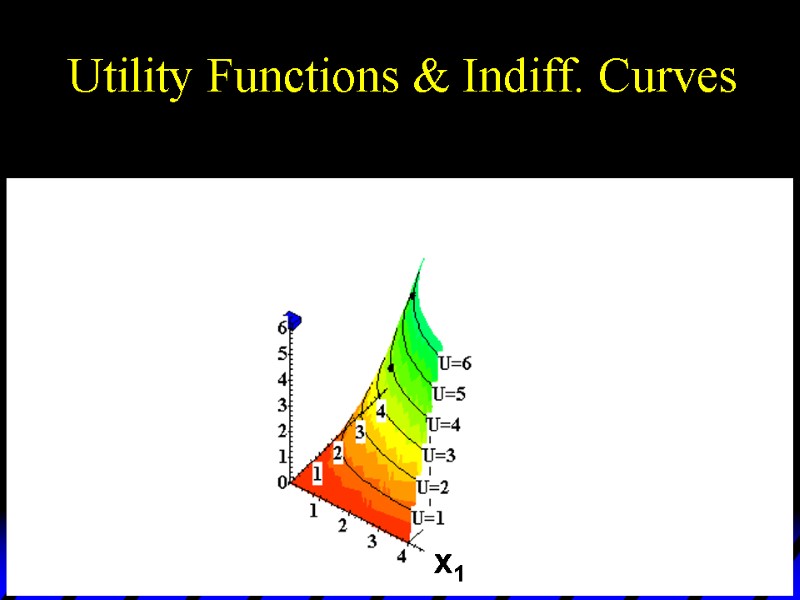
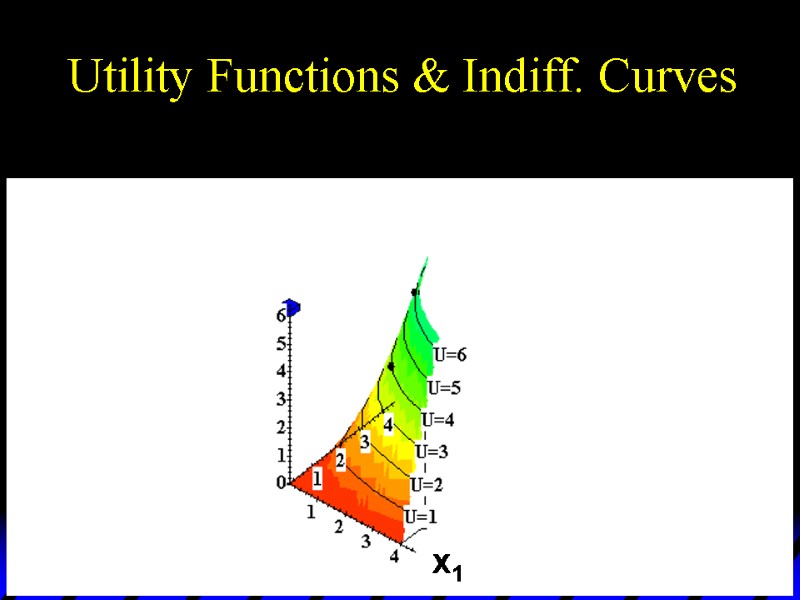
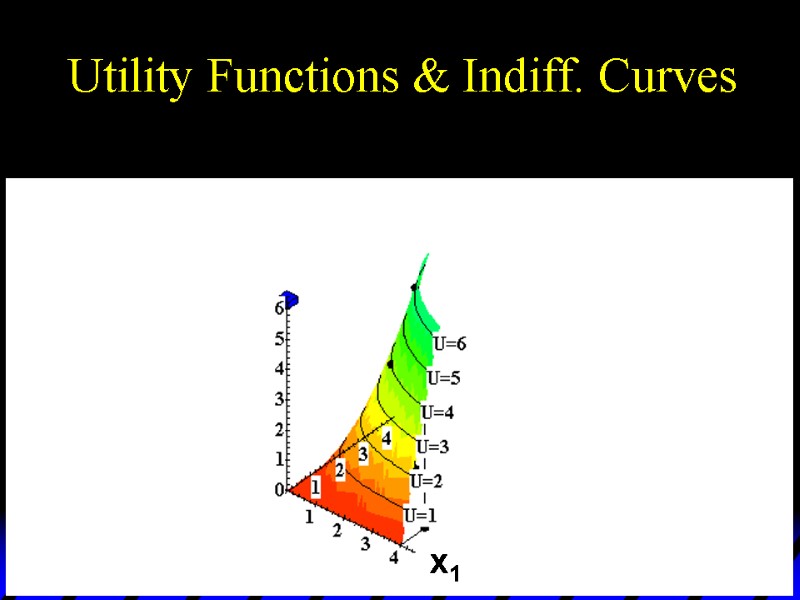
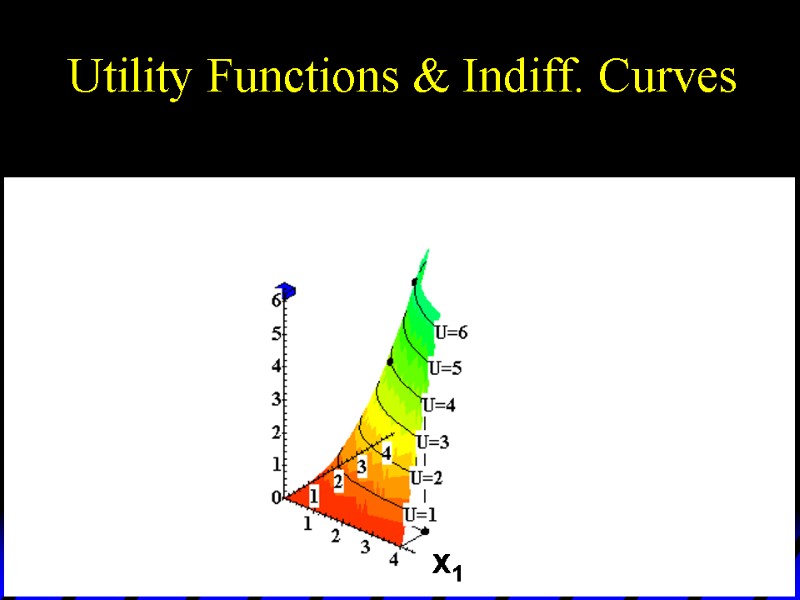
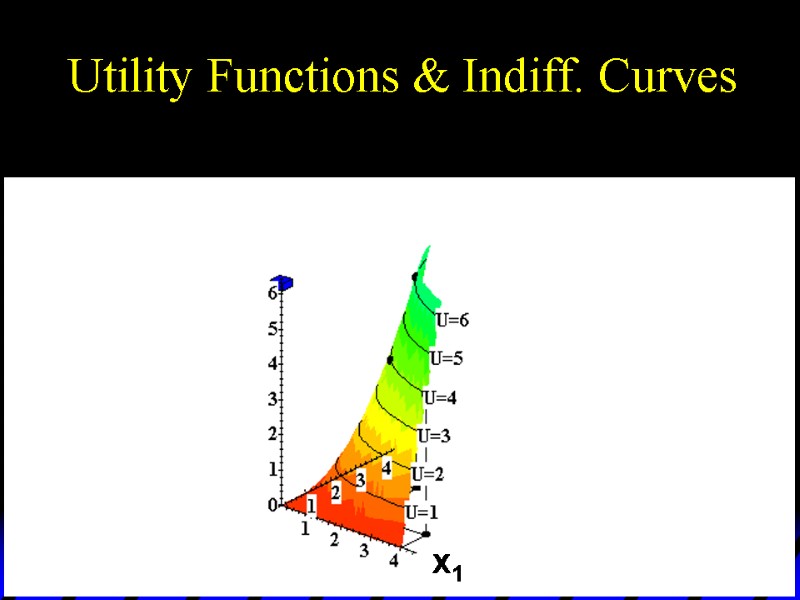
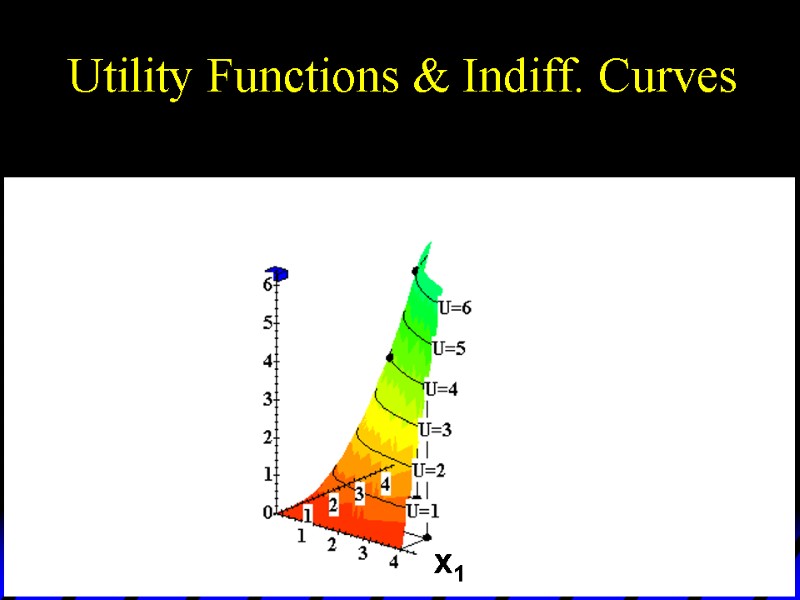
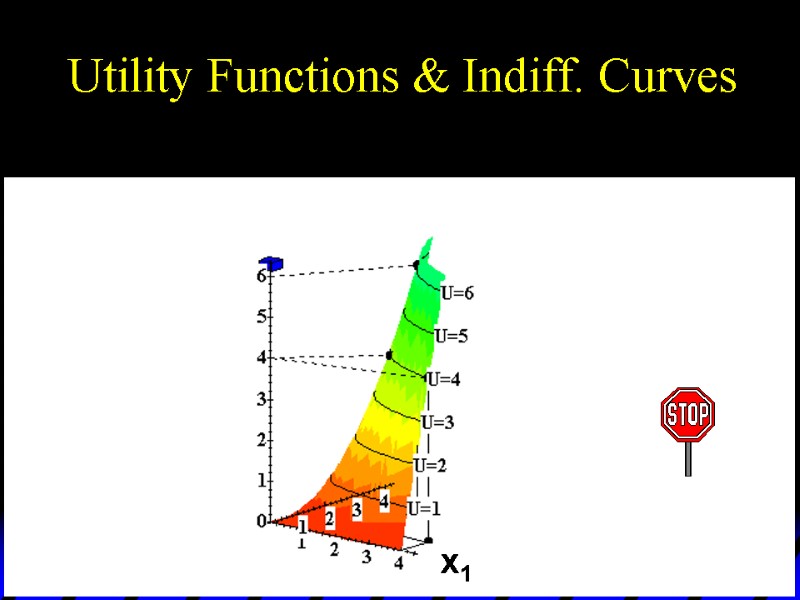
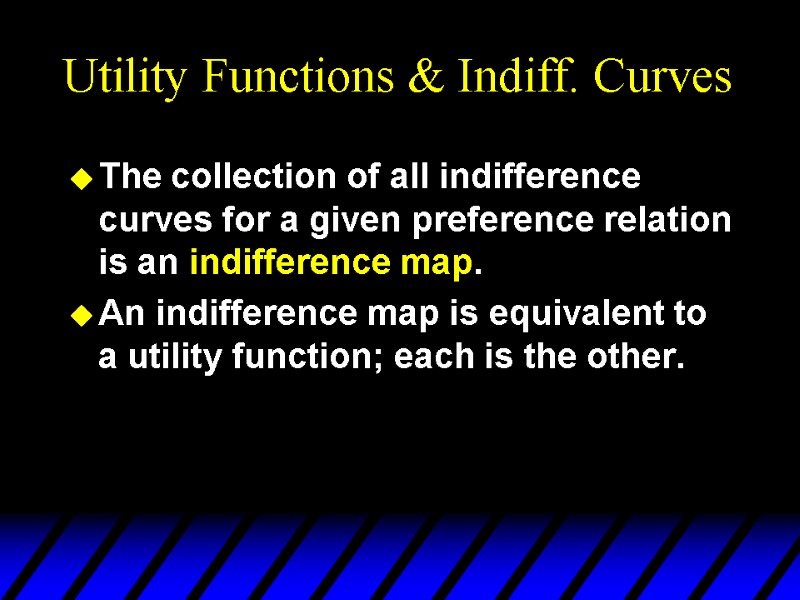
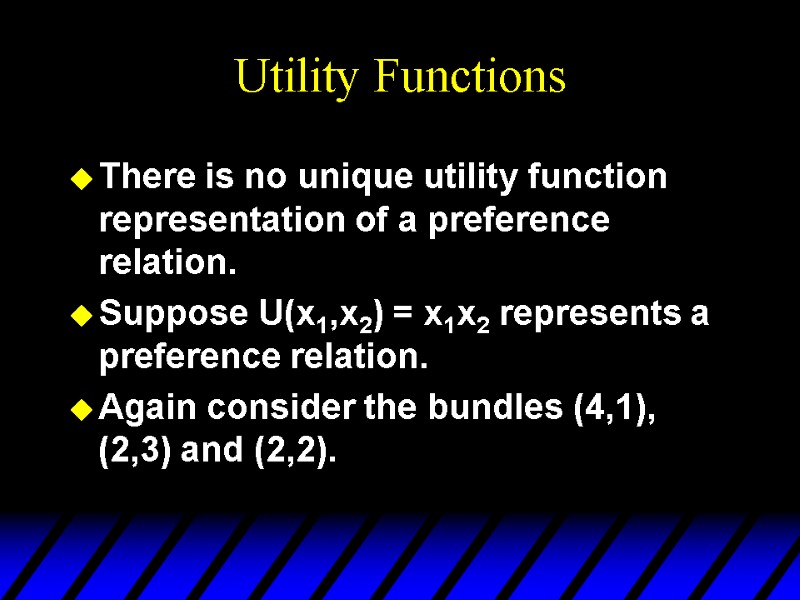
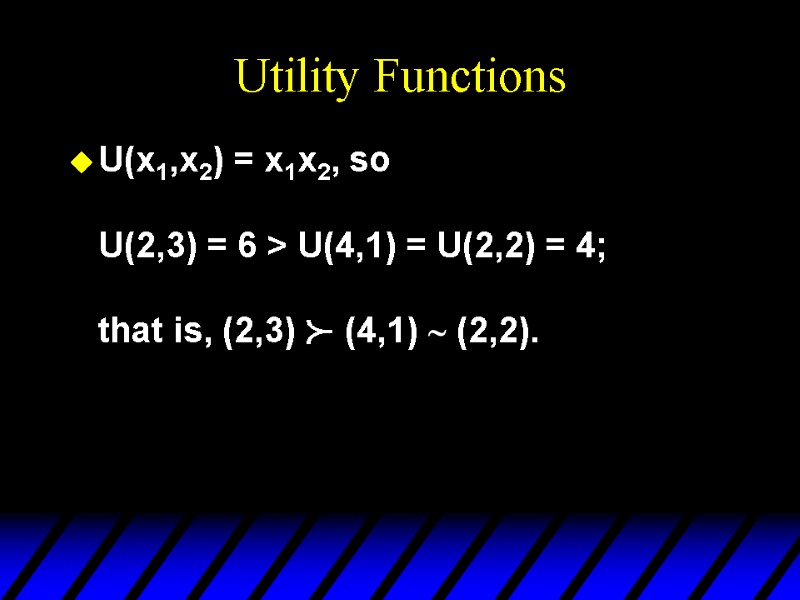
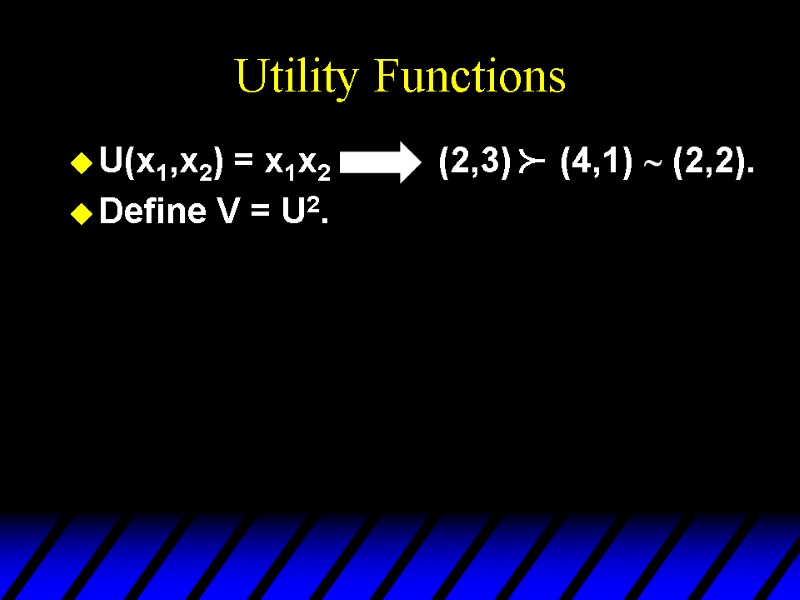
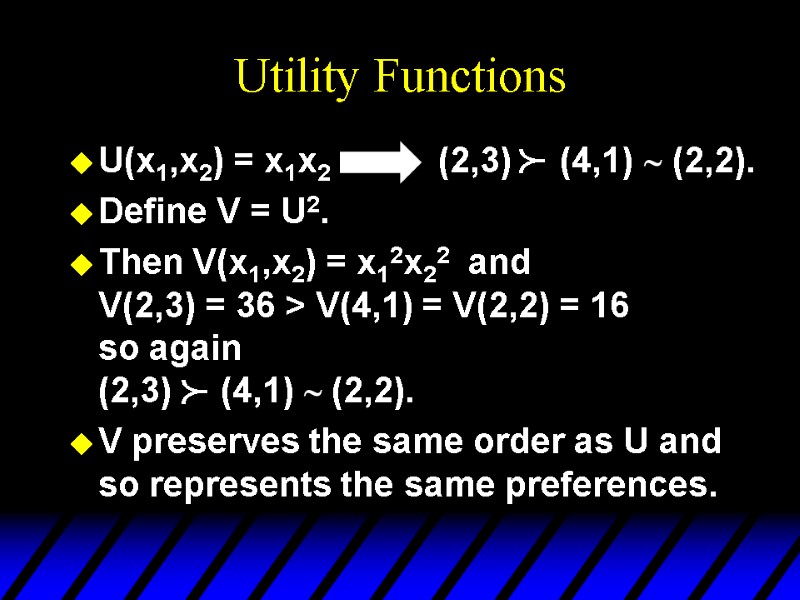
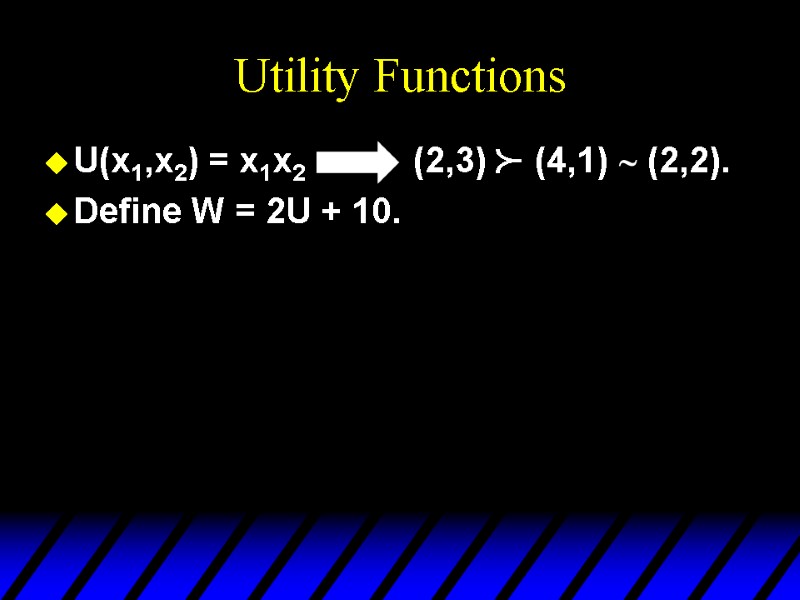
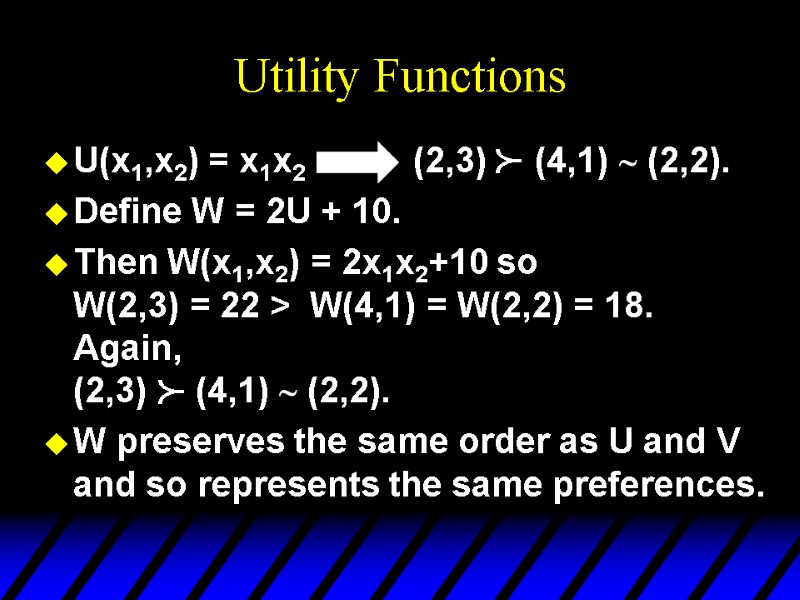
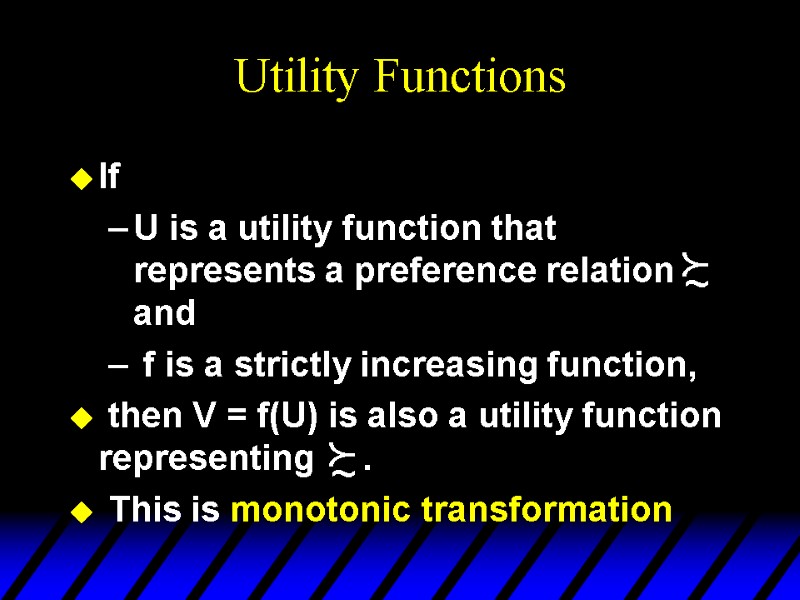

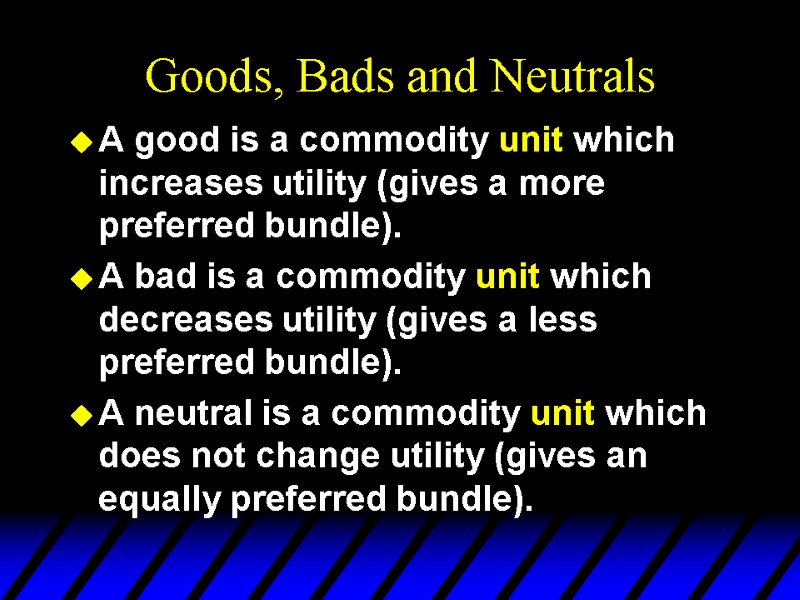
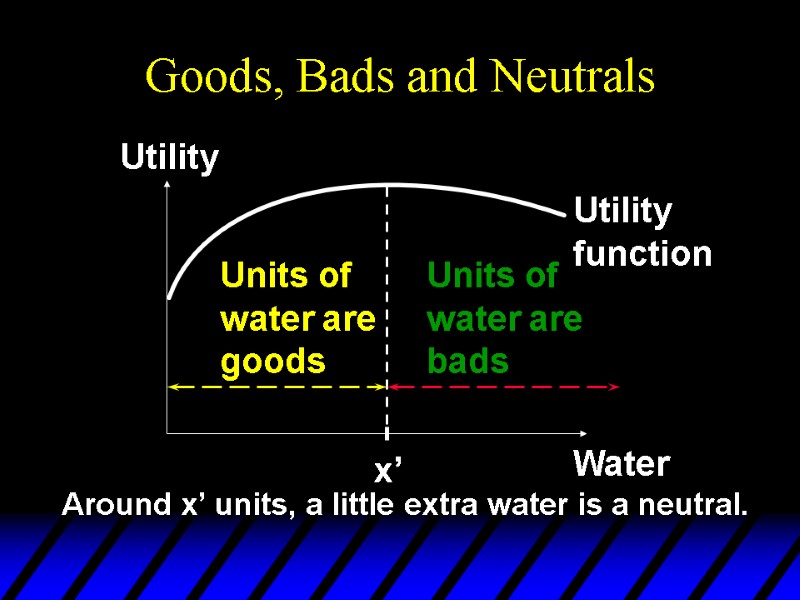
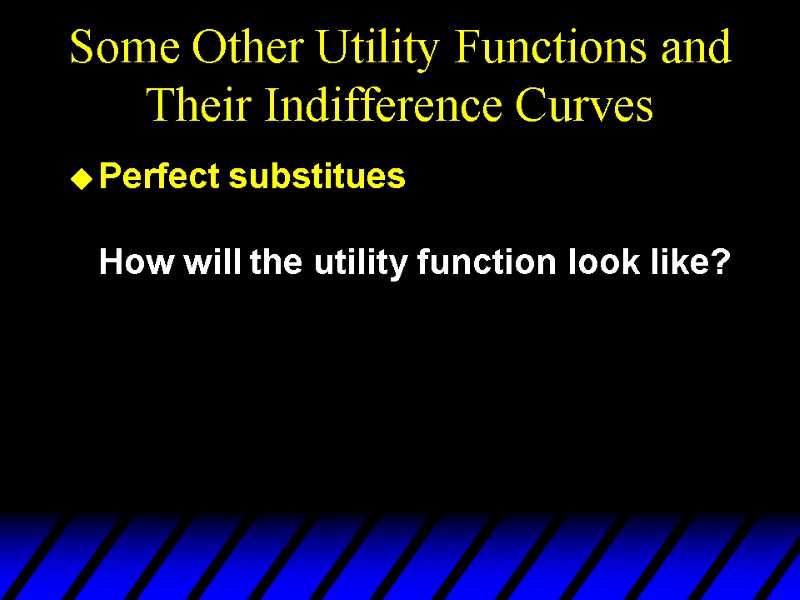
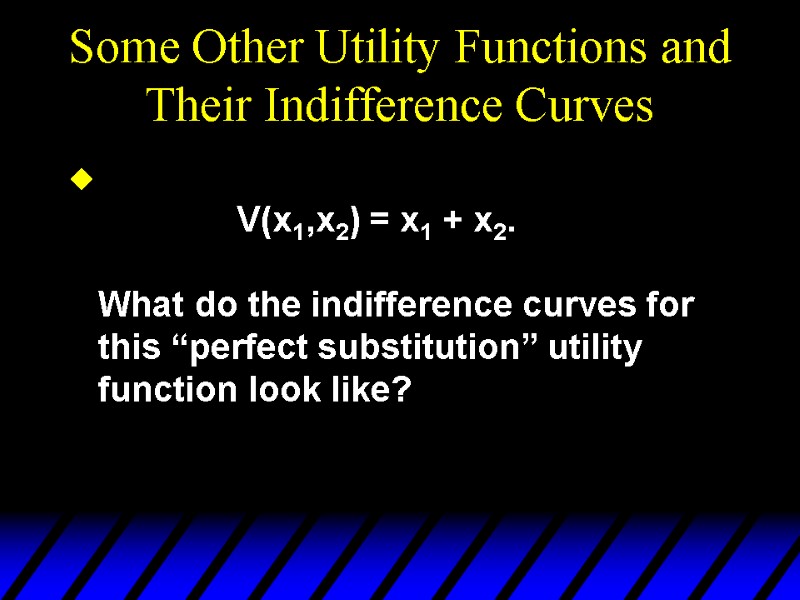
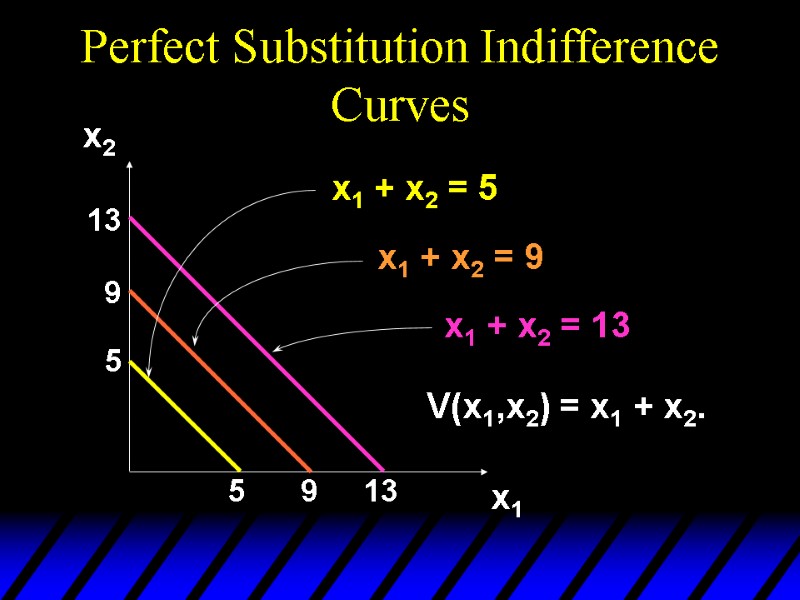
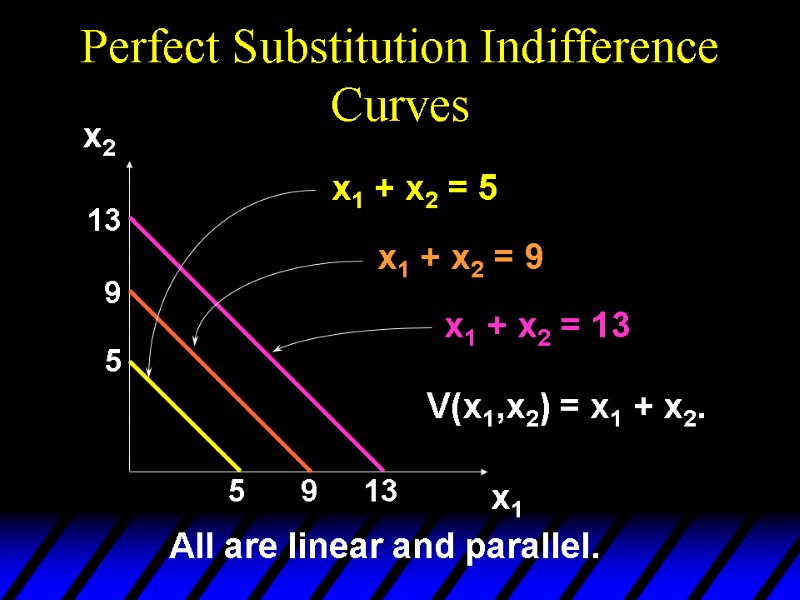
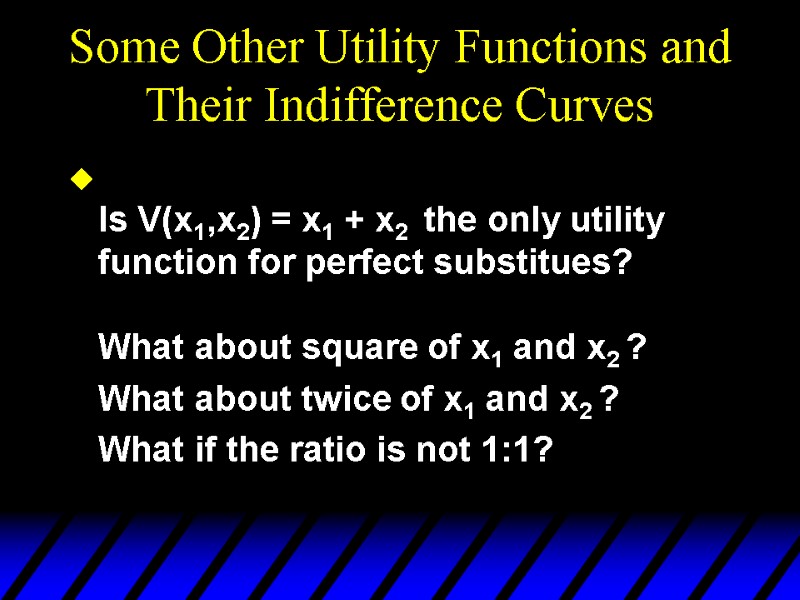
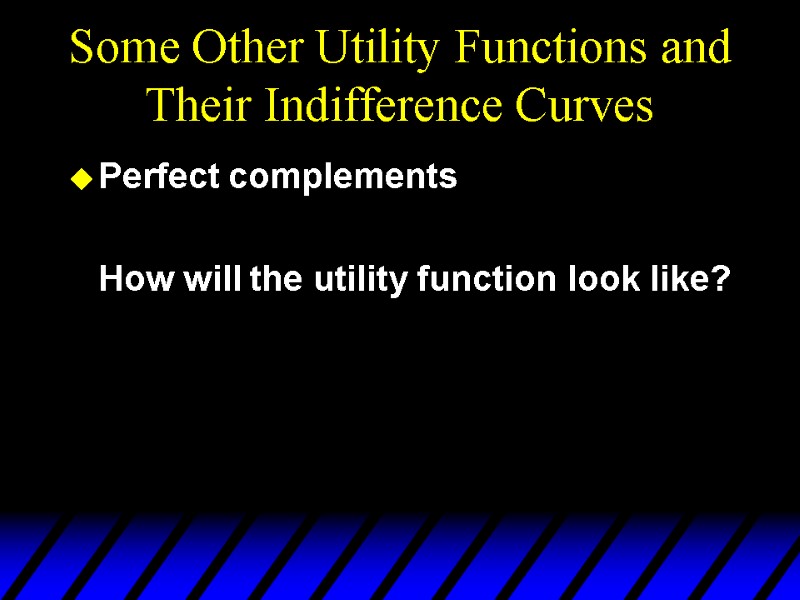
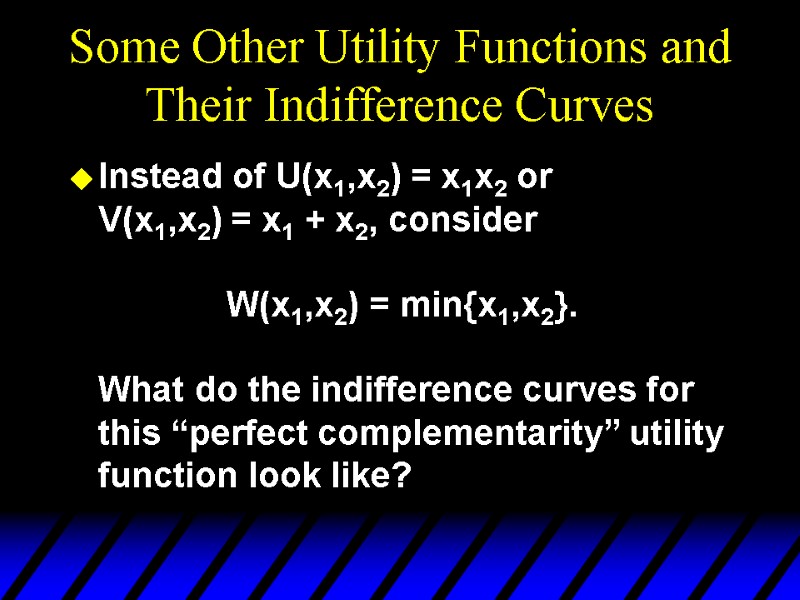
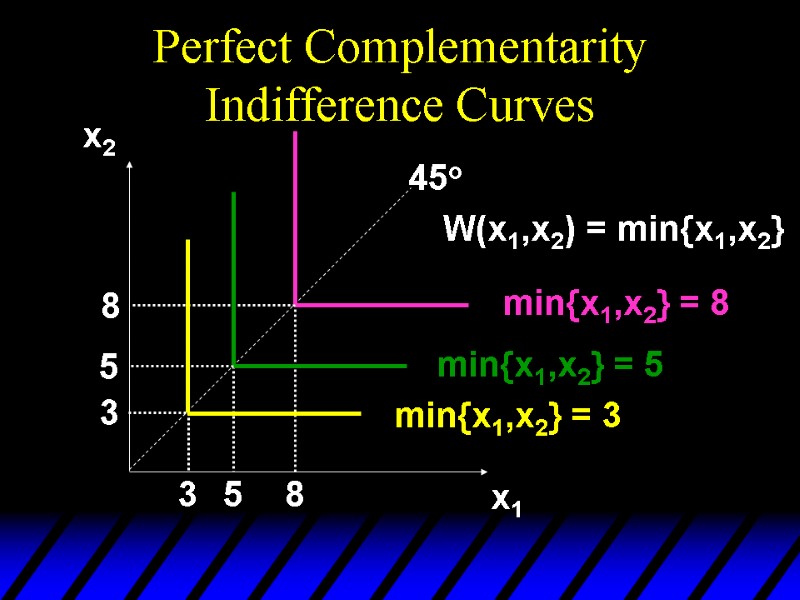
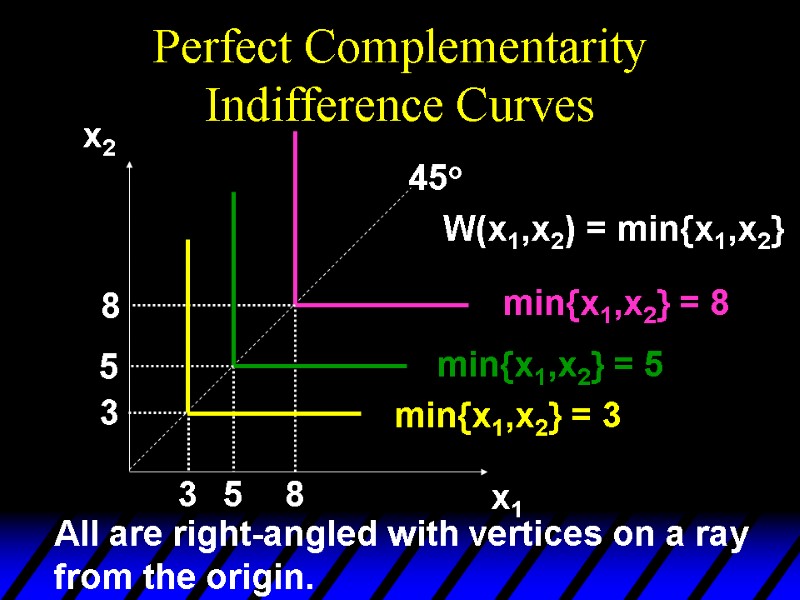
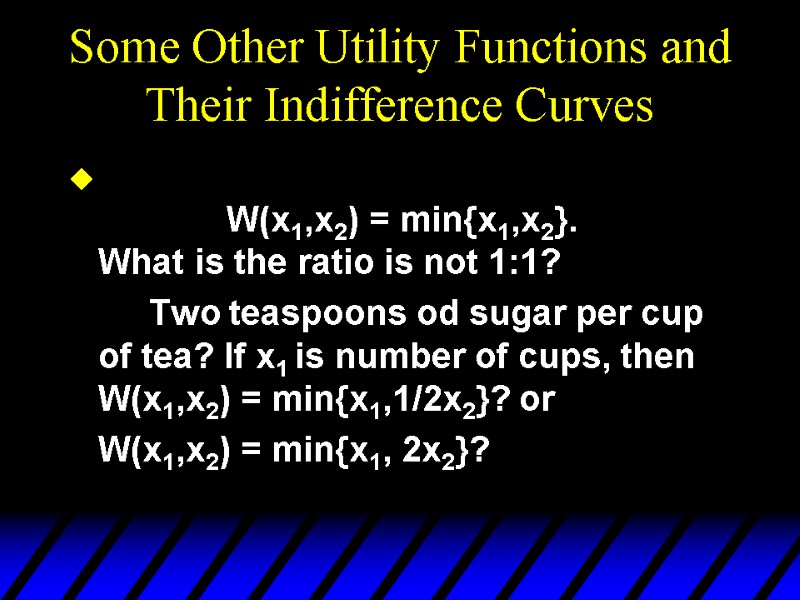
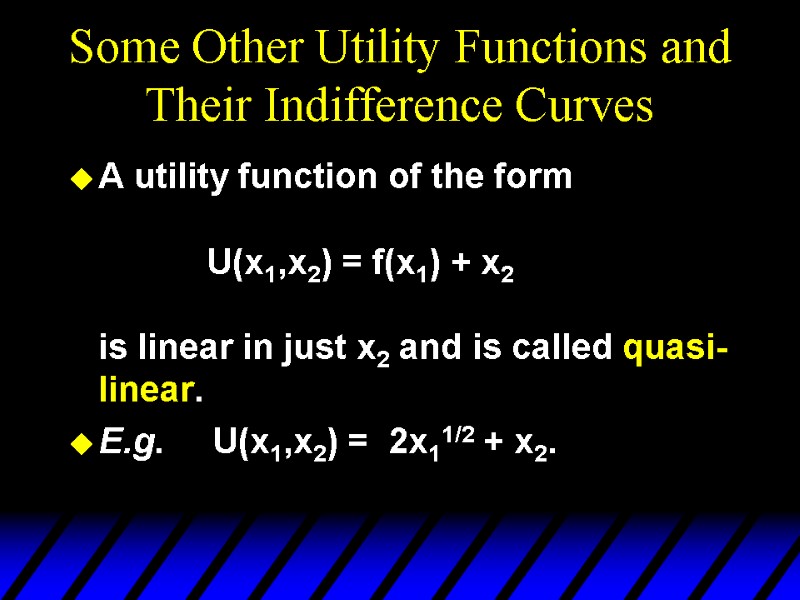
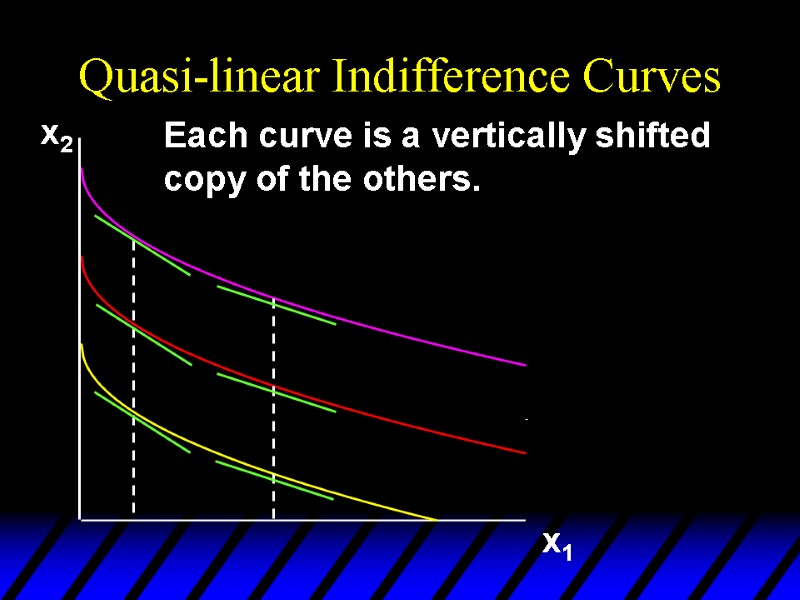
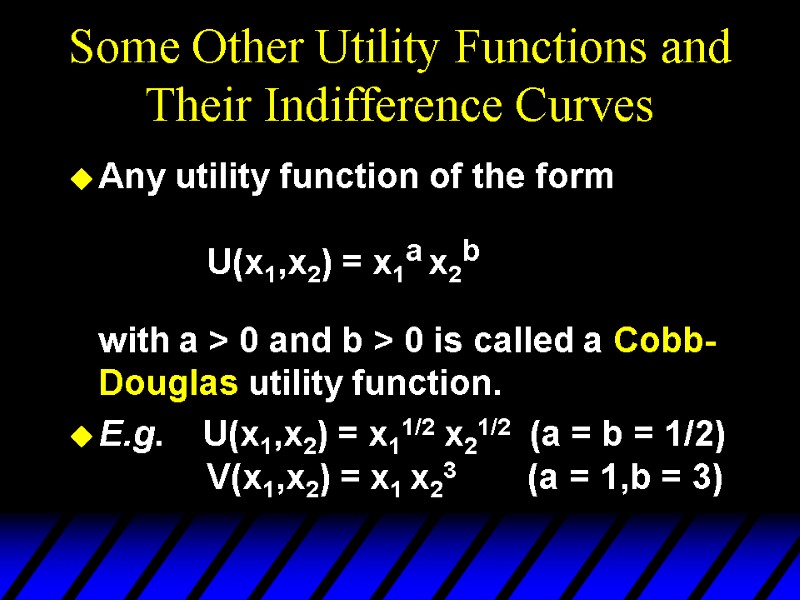
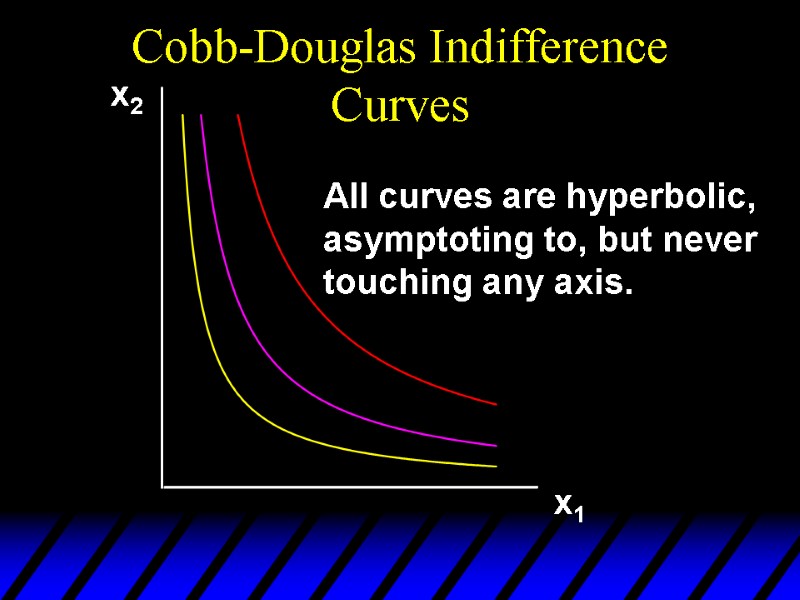
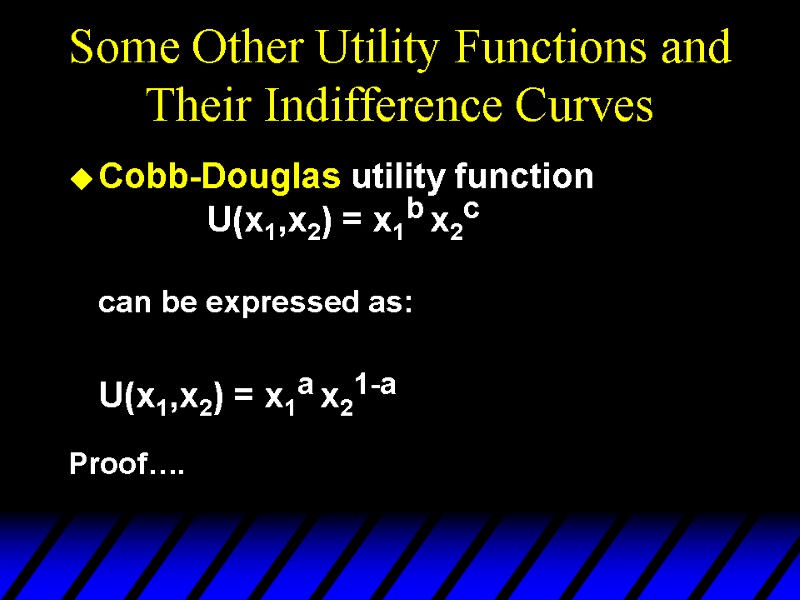
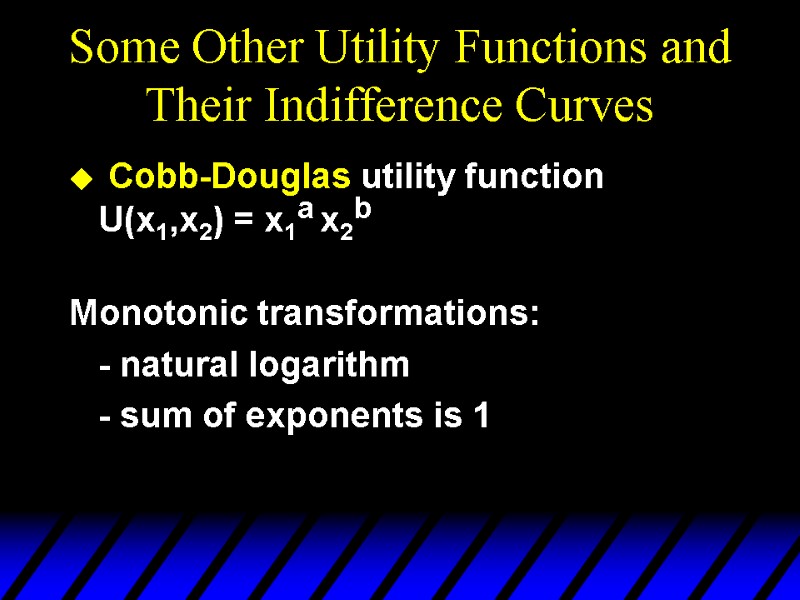
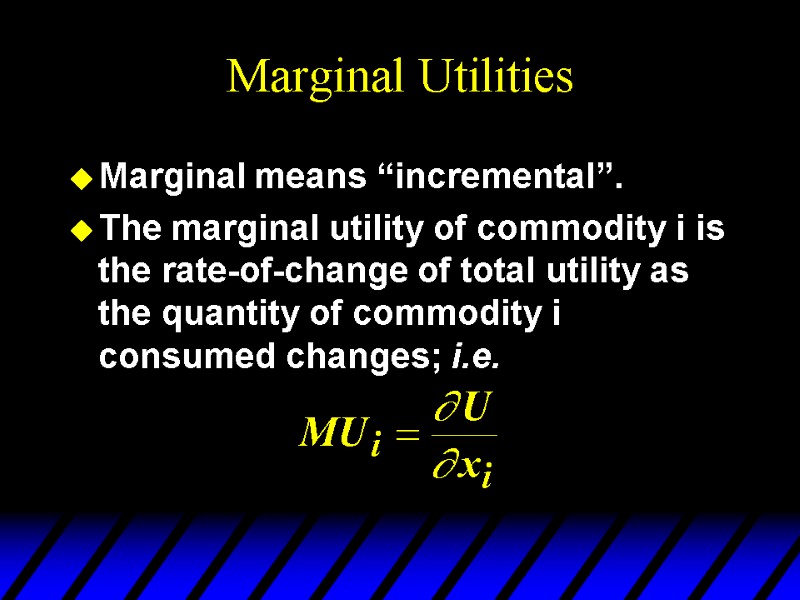
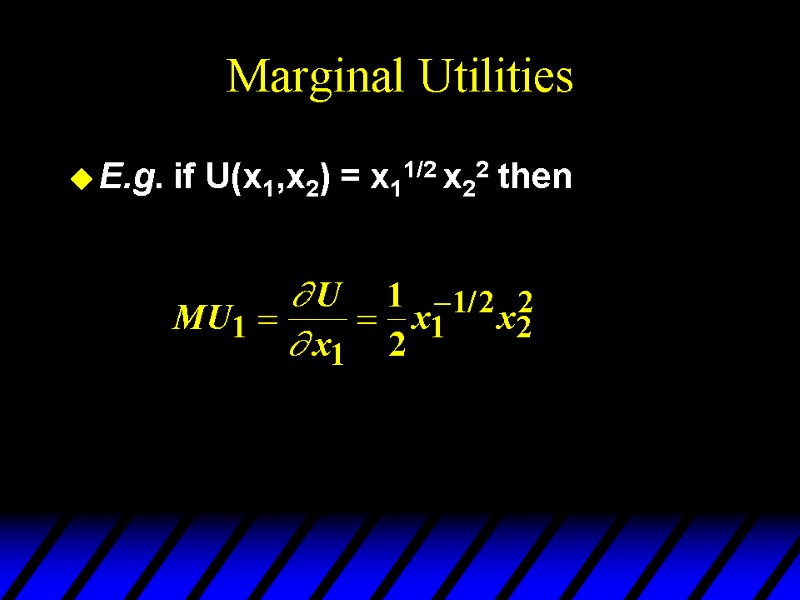
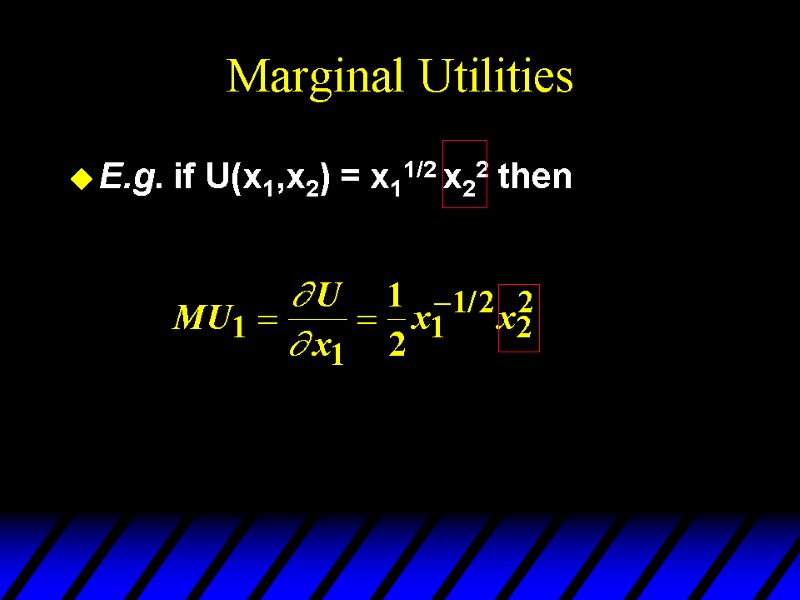
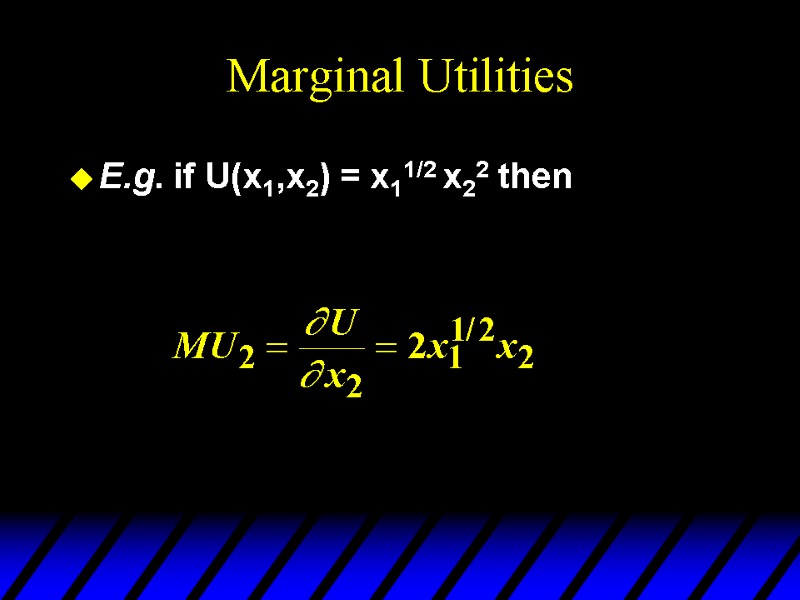
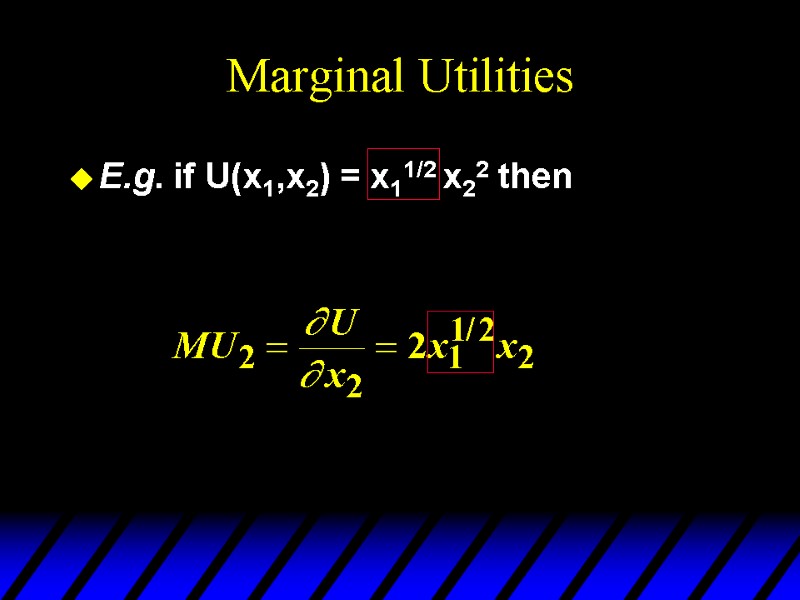
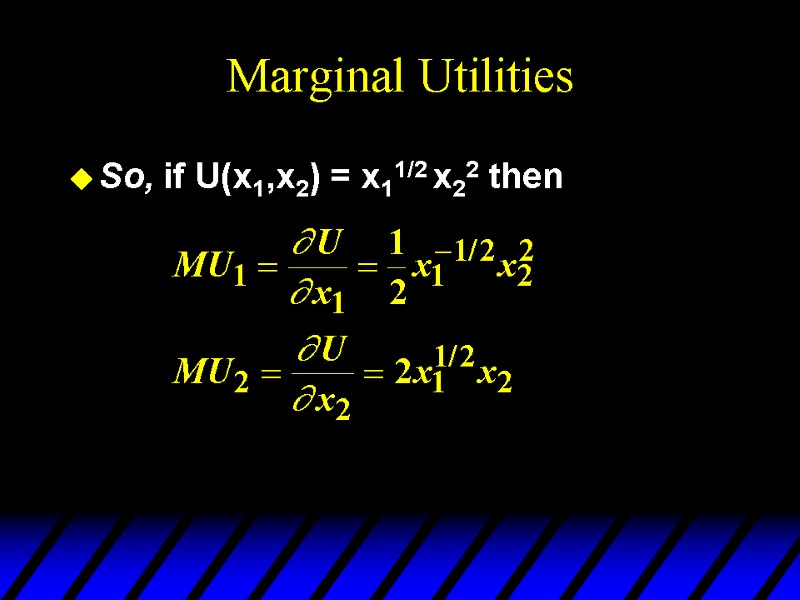
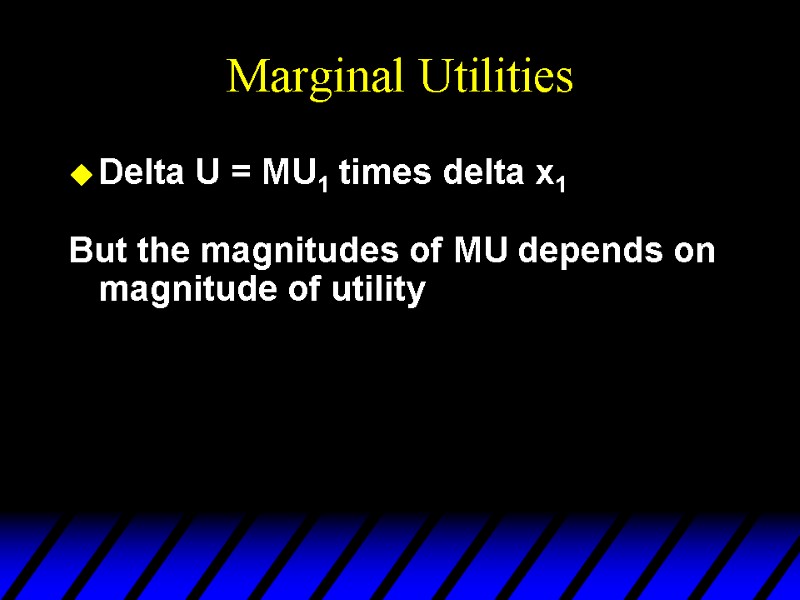
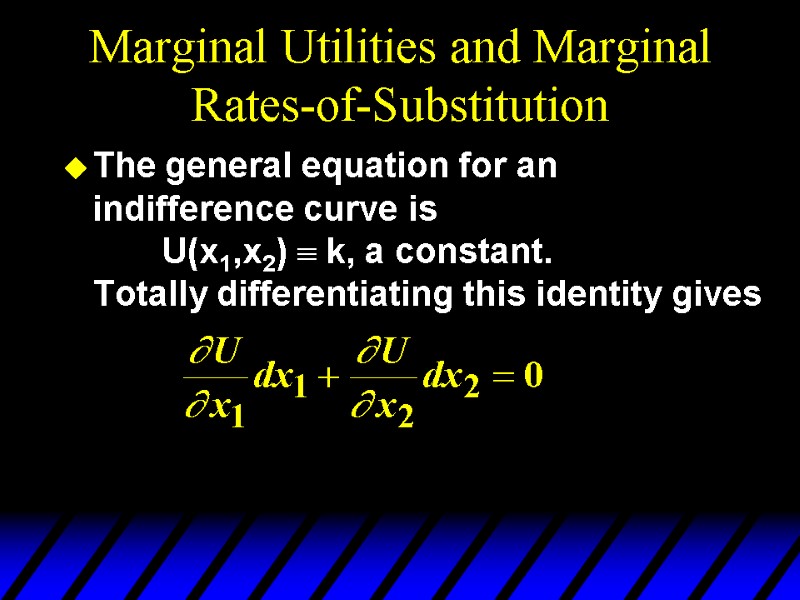
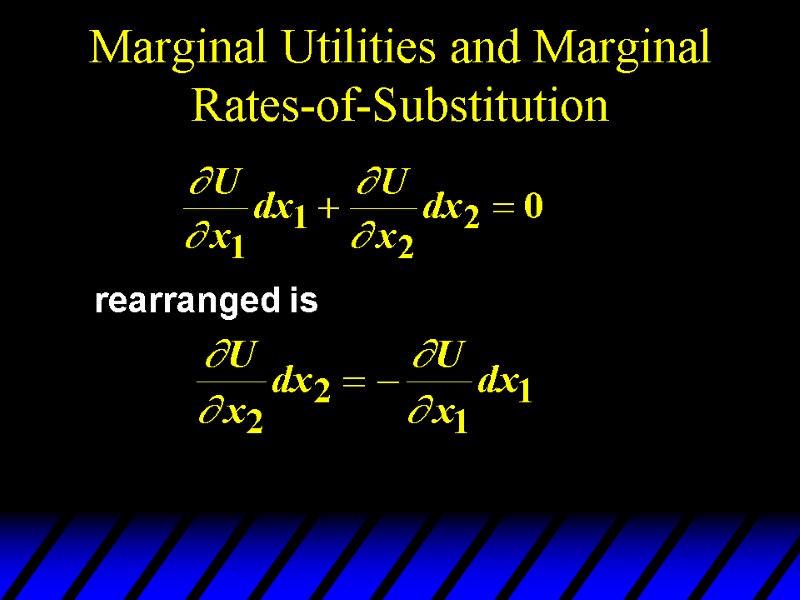
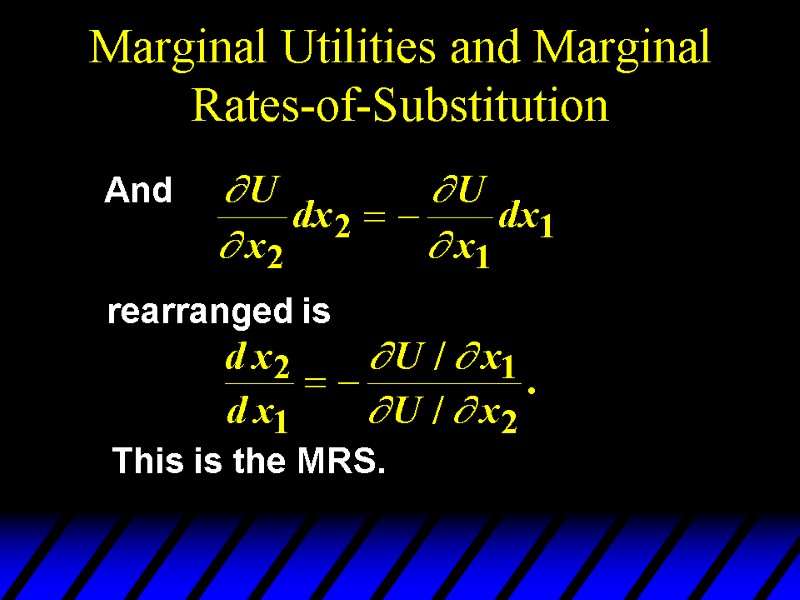
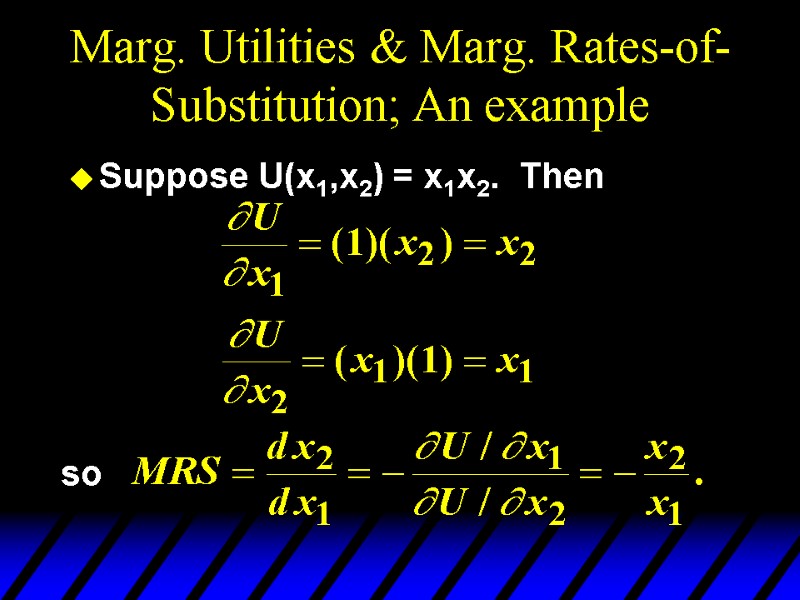
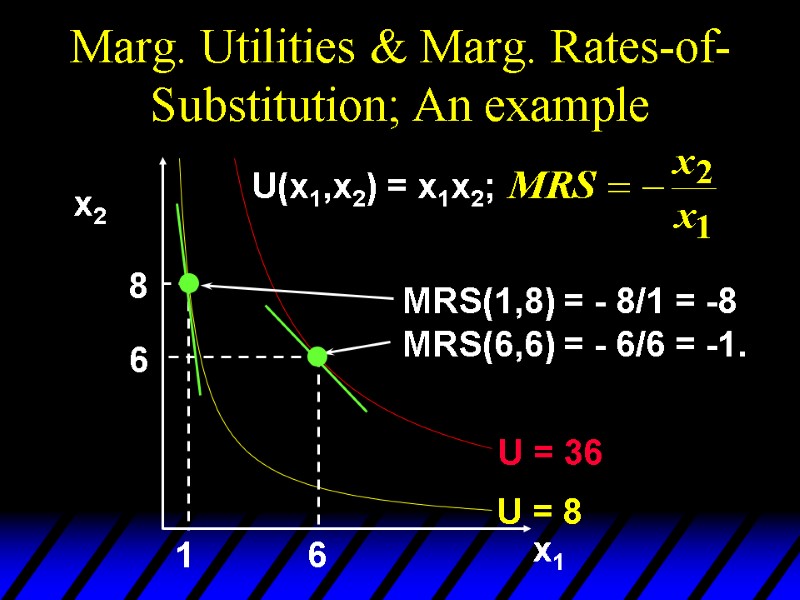
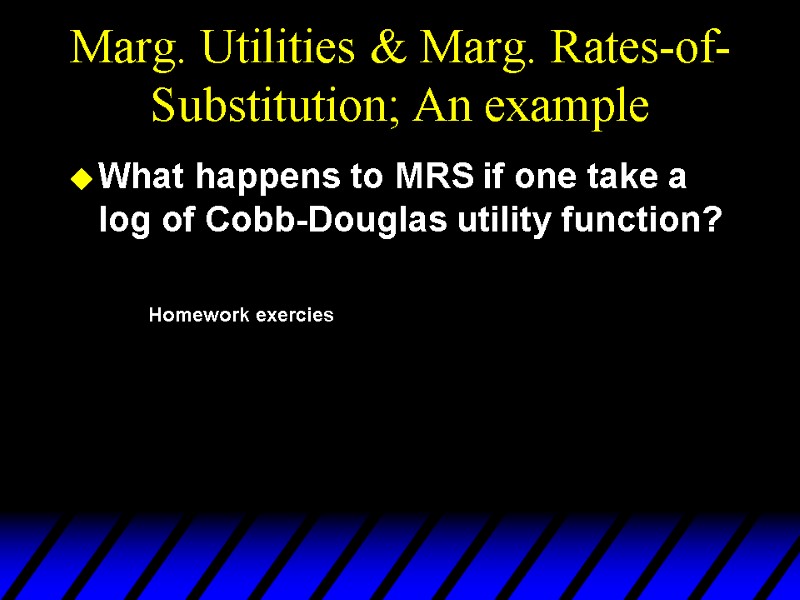
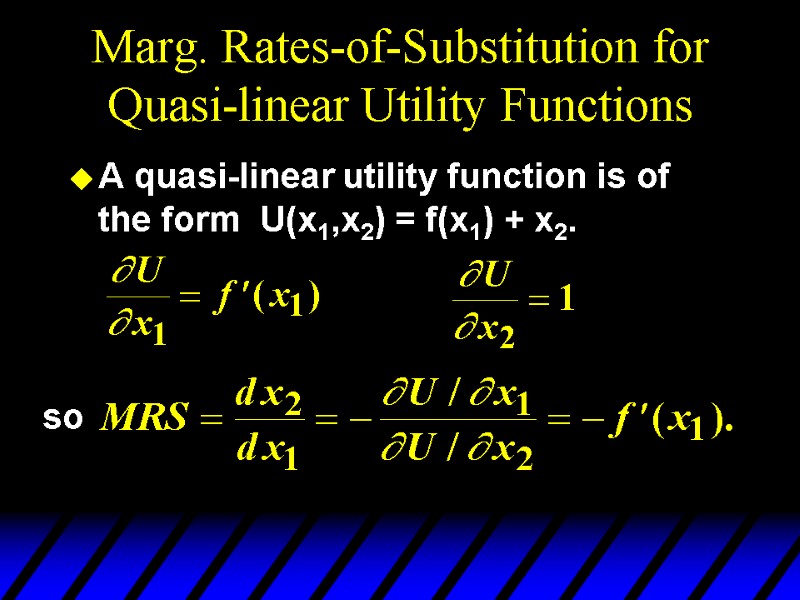
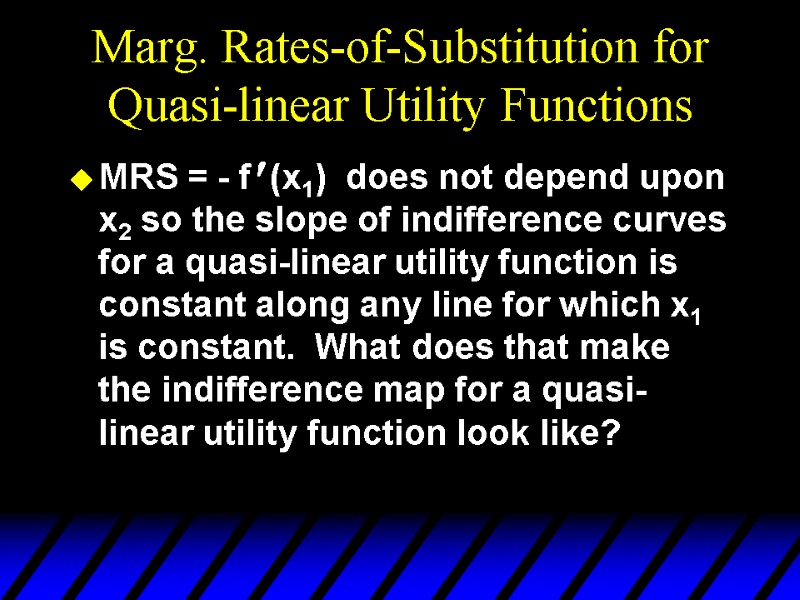
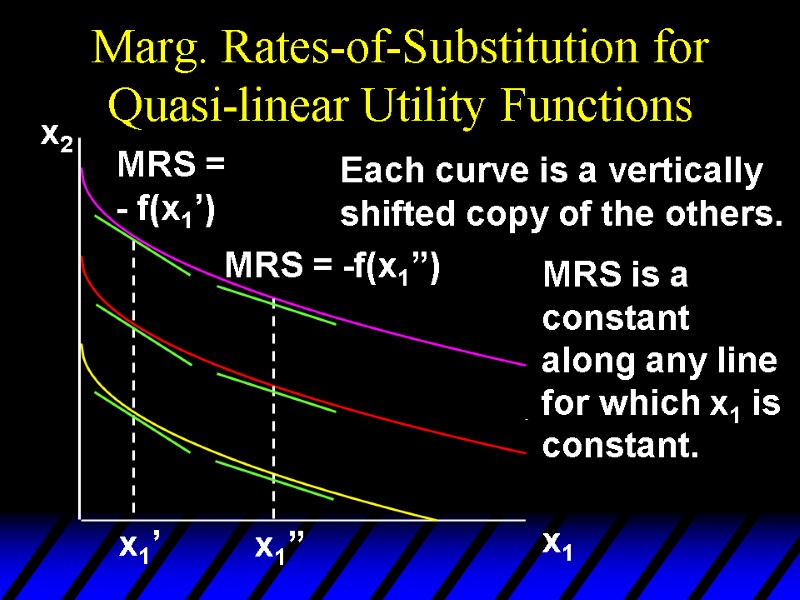
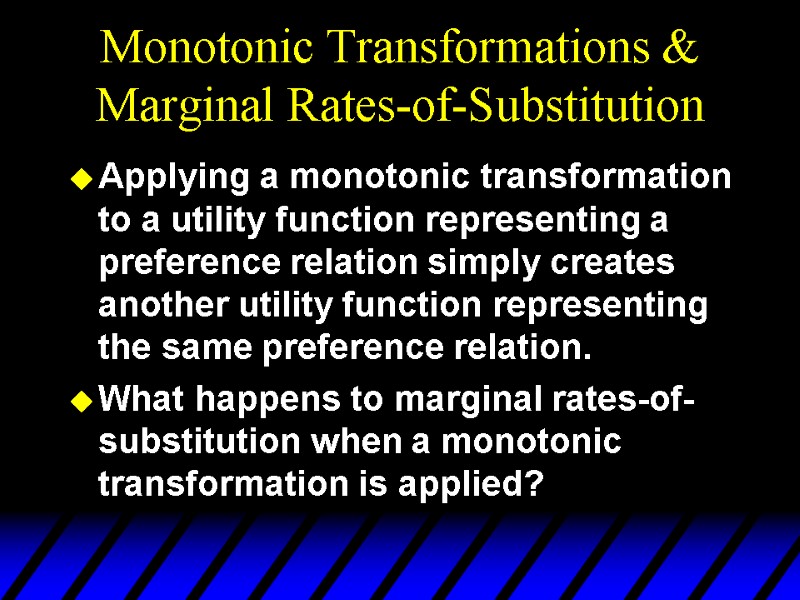
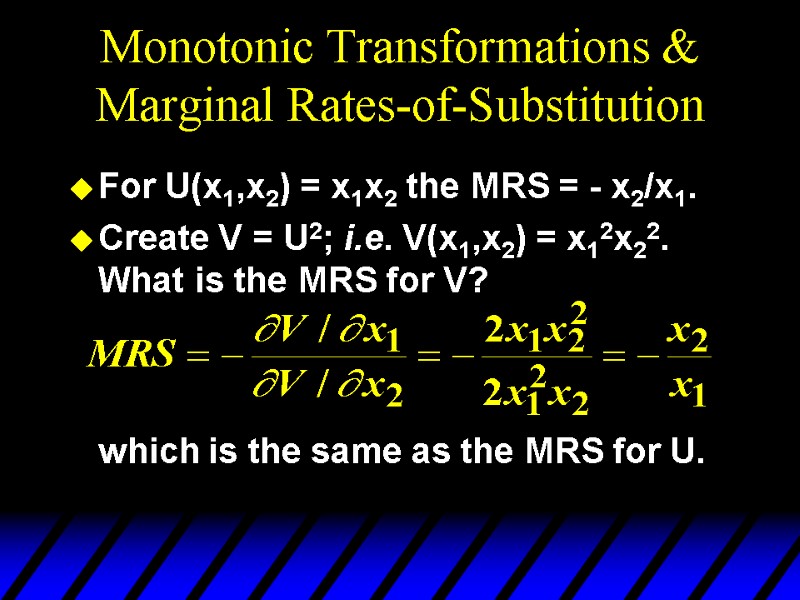
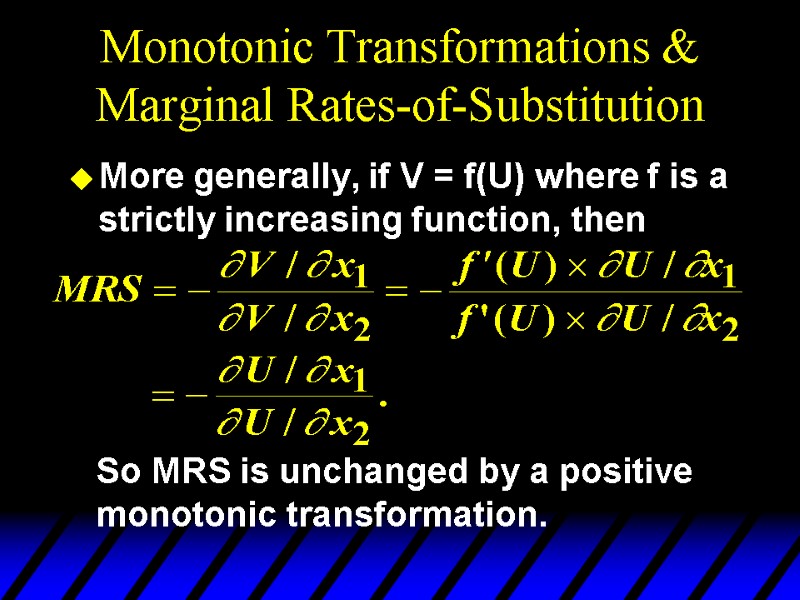
18206-varian_chapter04_utility_mod.ppt
- Количество слайдов: 87
 Chapter Four Utility
Chapter Four Utility
 Preferences - A Reminder x y: x is preferred strictly to y. x ~ y: x and y are equally preferred. x y: x is preferred at least as much as is y. p
Preferences - A Reminder x y: x is preferred strictly to y. x ~ y: x and y are equally preferred. x y: x is preferred at least as much as is y. p
 Preferences - A Reminder Completeness: For any two bundles x and y it is always possible to state either that x y or that y x.
Preferences - A Reminder Completeness: For any two bundles x and y it is always possible to state either that x y or that y x.
 Preferences - A Reminder Reflexivity: Any bundle x is always at least as preferred as itself; i.e. x x.
Preferences - A Reminder Reflexivity: Any bundle x is always at least as preferred as itself; i.e. x x.
 Preferences - A Reminder Transitivity: If x is at least as preferred as y, and y is at least as preferred as z, then x is at least as preferred as z; i.e. x y and y z x z.
Preferences - A Reminder Transitivity: If x is at least as preferred as y, and y is at least as preferred as z, then x is at least as preferred as z; i.e. x y and y z x z.
 Utility Now we talk about consumer preferences and utility is only a way to describe preferences All economists have to know is which bundles has a higher utility, how much higher does not matter at all
Utility Now we talk about consumer preferences and utility is only a way to describe preferences All economists have to know is which bundles has a higher utility, how much higher does not matter at all
 Utility How to measure person’s overall well-being Utility was thought of as a numeric measure of a person’s happines. Does it makes sense? Can one compare utility?
Utility How to measure person’s overall well-being Utility was thought of as a numeric measure of a person’s happines. Does it makes sense? Can one compare utility?
 Utility Functions A utility function is a way of assigning a number to every possible consumption bundle such that more-prefered budles get assigned larger number than less-preffered bundles.
Utility Functions A utility function is a way of assigning a number to every possible consumption bundle such that more-prefered budles get assigned larger number than less-preffered bundles.
 Utility Functions A preference relation that is complete, reflexive, transitive and continuous can be represented by a continuous utility function. Continuity means that small changes to a consumption bundle cause only small changes to the preference level.
Utility Functions A preference relation that is complete, reflexive, transitive and continuous can be represented by a continuous utility function. Continuity means that small changes to a consumption bundle cause only small changes to the preference level.
 Utility Functions A utility function U(x) represents a preference relation if and only if: x’ x” U(x’) > U(x”) x’ x” U(x’) < U(x”) x’ ~ x” U(x’) = U(x”). p p
Utility Functions A utility function U(x) represents a preference relation if and only if: x’ x” U(x’) > U(x”) x’ x” U(x’) < U(x”) x’ ~ x” U(x’) = U(x”). p p
 Utility Functions Different ways to assign utilities
Utility Functions Different ways to assign utilities
 Utility Functions Ordinal utility vs. cardinal utility Does „twice as” make any sense?
Utility Functions Ordinal utility vs. cardinal utility Does „twice as” make any sense?
 Utility Functions & Indiff. Curves Consider the bundles (4,1), (2,3) and (2,2). Suppose (2,3) (4,1) ~ (2,2). Assign to these bundles any numbers that preserve the preference ordering; e.g. U(2,3) = 6 > U(4,1) = U(2,2) = 4. Call these numbers utility levels. p
Utility Functions & Indiff. Curves Consider the bundles (4,1), (2,3) and (2,2). Suppose (2,3) (4,1) ~ (2,2). Assign to these bundles any numbers that preserve the preference ordering; e.g. U(2,3) = 6 > U(4,1) = U(2,2) = 4. Call these numbers utility levels. p
 Utility Functions & Indiff. Curves An indifference curve contains equally preferred bundles. Equal preference same utility level. Therefore, all bundles in an indifference curve have the same utility level.
Utility Functions & Indiff. Curves An indifference curve contains equally preferred bundles. Equal preference same utility level. Therefore, all bundles in an indifference curve have the same utility level.
 Utility Functions & Indiff. Curves So the bundles (4,1) and (2,2) are in the indiff. curve with utility level U 4 But the bundle (2,3) is in the indiff. curve with utility level U 6. On an indifference curve diagram, this preference information looks as follows:
Utility Functions & Indiff. Curves So the bundles (4,1) and (2,2) are in the indiff. curve with utility level U 4 But the bundle (2,3) is in the indiff. curve with utility level U 6. On an indifference curve diagram, this preference information looks as follows:
 Utility Functions & Indiff. Curves U 6 U 4 (2,3) (2,2) ~ (4,1) x1 x2 p
Utility Functions & Indiff. Curves U 6 U 4 (2,3) (2,2) ~ (4,1) x1 x2 p
 Utility Functions & Indiff. Curves Another way to visualize this same information is to plot the utility level on a vertical axis.
Utility Functions & Indiff. Curves Another way to visualize this same information is to plot the utility level on a vertical axis.
 U(2,3) = 6 U(2,2) = 4 U(4,1) = 4 Utility Functions & Indiff. Curves 3D plot of consumption & utility levels for 3 bundles x1 x2 Utility
U(2,3) = 6 U(2,2) = 4 U(4,1) = 4 Utility Functions & Indiff. Curves 3D plot of consumption & utility levels for 3 bundles x1 x2 Utility
 Utility Functions & Indiff. Curves This 3D visualization of preferences can be made more informative by adding into it the two indifference curves.
Utility Functions & Indiff. Curves This 3D visualization of preferences can be made more informative by adding into it the two indifference curves.
 Utility Functions & Indiff. Curves U 4 U 6 Higher indifference curves contain more preferred bundles. Utility x2 x1
Utility Functions & Indiff. Curves U 4 U 6 Higher indifference curves contain more preferred bundles. Utility x2 x1
 Utility Functions & Indiff. Curves Comparing more bundles will create a larger collection of all indifference curves and a better description of the consumer’s preferences.
Utility Functions & Indiff. Curves Comparing more bundles will create a larger collection of all indifference curves and a better description of the consumer’s preferences.
 Utility Functions & Indiff. Curves U 6 U 4 U 2 x1 x2
Utility Functions & Indiff. Curves U 6 U 4 U 2 x1 x2
 Utility Functions & Indiff. Curves As before, this can be visualized in 3D by plotting each indifference curve at the height of its utility index.
Utility Functions & Indiff. Curves As before, this can be visualized in 3D by plotting each indifference curve at the height of its utility index.
 Utility Functions & Indiff. Curves U 6 U 5 U 4 U 3 U 2 U 1 x1 x2 Utility
Utility Functions & Indiff. Curves U 6 U 5 U 4 U 3 U 2 U 1 x1 x2 Utility
 Utility Functions & Indiff. Curves Comparing all possible consumption bundles gives the complete collection of the consumer’s indifference curves, each with its assigned utility level. This complete collection of indifference curves completely represents the consumer’s preferences.
Utility Functions & Indiff. Curves Comparing all possible consumption bundles gives the complete collection of the consumer’s indifference curves, each with its assigned utility level. This complete collection of indifference curves completely represents the consumer’s preferences.
 Utility Functions & Indiff. Curves x1 x2
Utility Functions & Indiff. Curves x1 x2
 Utility Functions & Indiff. Curves x1 x2
Utility Functions & Indiff. Curves x1 x2
 Utility Functions & Indiff. Curves x1 x2
Utility Functions & Indiff. Curves x1 x2
 Utility Functions & Indiff. Curves x1 x2
Utility Functions & Indiff. Curves x1 x2
 Utility Functions & Indiff. Curves x1 x2
Utility Functions & Indiff. Curves x1 x2
 Utility Functions & Indiff. Curves x1 x2
Utility Functions & Indiff. Curves x1 x2
 Utility Functions & Indiff. Curves x1
Utility Functions & Indiff. Curves x1
 Utility Functions & Indiff. Curves x1
Utility Functions & Indiff. Curves x1
 Utility Functions & Indiff. Curves x1
Utility Functions & Indiff. Curves x1
 Utility Functions & Indiff. Curves x1
Utility Functions & Indiff. Curves x1
 Utility Functions & Indiff. Curves x1
Utility Functions & Indiff. Curves x1
 Utility Functions & Indiff. Curves x1
Utility Functions & Indiff. Curves x1
 Utility Functions & Indiff. Curves x1
Utility Functions & Indiff. Curves x1
 Utility Functions & Indiff. Curves x1
Utility Functions & Indiff. Curves x1
 Utility Functions & Indiff. Curves x1
Utility Functions & Indiff. Curves x1
 Utility Functions & Indiff. Curves x1
Utility Functions & Indiff. Curves x1
 Utility Functions & Indiff. Curves The collection of all indifference curves for a given preference relation is an indifference map. An indifference map is equivalent to a utility function; each is the other.
Utility Functions & Indiff. Curves The collection of all indifference curves for a given preference relation is an indifference map. An indifference map is equivalent to a utility function; each is the other.
 Utility Functions There is no unique utility function representation of a preference relation. Suppose U(x1,x2) = x1x2 represents a preference relation. Again consider the bundles (4,1), (2,3) and (2,2).
Utility Functions There is no unique utility function representation of a preference relation. Suppose U(x1,x2) = x1x2 represents a preference relation. Again consider the bundles (4,1), (2,3) and (2,2).
 Utility Functions U(x1,x2) = x1x2, so U(2,3) = 6 > U(4,1) = U(2,2) = 4; that is, (2,3) (4,1) ~ (2,2). p
Utility Functions U(x1,x2) = x1x2, so U(2,3) = 6 > U(4,1) = U(2,2) = 4; that is, (2,3) (4,1) ~ (2,2). p
 Utility Functions U(x1,x2) = x1x2 (2,3) (4,1) ~ (2,2). Define V = U2. p
Utility Functions U(x1,x2) = x1x2 (2,3) (4,1) ~ (2,2). Define V = U2. p
 Utility Functions U(x1,x2) = x1x2 (2,3) (4,1) ~ (2,2). Define V = U2. Then V(x1,x2) = x12x22 and V(2,3) = 36 > V(4,1) = V(2,2) = 16 so again (2,3) (4,1) ~ (2,2). V preserves the same order as U and so represents the same preferences. p p
Utility Functions U(x1,x2) = x1x2 (2,3) (4,1) ~ (2,2). Define V = U2. Then V(x1,x2) = x12x22 and V(2,3) = 36 > V(4,1) = V(2,2) = 16 so again (2,3) (4,1) ~ (2,2). V preserves the same order as U and so represents the same preferences. p p
 Utility Functions U(x1,x2) = x1x2 (2,3) (4,1) ~ (2,2). Define W = 2U + 10. p
Utility Functions U(x1,x2) = x1x2 (2,3) (4,1) ~ (2,2). Define W = 2U + 10. p
 Utility Functions U(x1,x2) = x1x2 (2,3) (4,1) ~ (2,2). Define W = 2U + 10. Then W(x1,x2) = 2x1x2+10 so W(2,3) = 22 > W(4,1) = W(2,2) = 18. Again, (2,3) (4,1) ~ (2,2). W preserves the same order as U and V and so represents the same preferences. p p
Utility Functions U(x1,x2) = x1x2 (2,3) (4,1) ~ (2,2). Define W = 2U + 10. Then W(x1,x2) = 2x1x2+10 so W(2,3) = 22 > W(4,1) = W(2,2) = 18. Again, (2,3) (4,1) ~ (2,2). W preserves the same order as U and V and so represents the same preferences. p p
 Utility Functions If U is a utility function that represents a preference relation and f is a strictly increasing function, then V = f(U) is also a utility function representing . This is monotonic transformation
Utility Functions If U is a utility function that represents a preference relation and f is a strictly increasing function, then V = f(U) is also a utility function representing . This is monotonic transformation
 Utility Functions Monotonic transformation of a utility function is a utility function that represents the same preferences as a original utility function.
Utility Functions Monotonic transformation of a utility function is a utility function that represents the same preferences as a original utility function.
 Goods, Bads and Neutrals A good is a commodity unit which increases utility (gives a more preferred bundle). A bad is a commodity unit which decreases utility (gives a less preferred bundle). A neutral is a commodity unit which does not change utility (gives an equally preferred bundle).
Goods, Bads and Neutrals A good is a commodity unit which increases utility (gives a more preferred bundle). A bad is a commodity unit which decreases utility (gives a less preferred bundle). A neutral is a commodity unit which does not change utility (gives an equally preferred bundle).
 Goods, Bads and Neutrals Utility Water x’ Units of water are goods Units of water are bads Around x’ units, a little extra water is a neutral. Utility function
Goods, Bads and Neutrals Utility Water x’ Units of water are goods Units of water are bads Around x’ units, a little extra water is a neutral. Utility function
 Some Other Utility Functions and Their Indifference Curves Perfect substitues How will the utility function look like?
Some Other Utility Functions and Their Indifference Curves Perfect substitues How will the utility function look like?
 Some Other Utility Functions and Their Indifference Curves V(x1,x2) = x1 + x2. What do the indifference curves for this “perfect substitution” utility function look like?
Some Other Utility Functions and Their Indifference Curves V(x1,x2) = x1 + x2. What do the indifference curves for this “perfect substitution” utility function look like?
 Perfect Substitution Indifference Curves 5 5 9 9 13 13 x1 x2 x1 + x2 = 5 x1 + x2 = 9 x1 + x2 = 13 V(x1,x2) = x1 + x2.
Perfect Substitution Indifference Curves 5 5 9 9 13 13 x1 x2 x1 + x2 = 5 x1 + x2 = 9 x1 + x2 = 13 V(x1,x2) = x1 + x2.
 Perfect Substitution Indifference Curves 5 5 9 9 13 13 x1 x2 x1 + x2 = 5 x1 + x2 = 9 x1 + x2 = 13 All are linear and parallel. V(x1,x2) = x1 + x2.
Perfect Substitution Indifference Curves 5 5 9 9 13 13 x1 x2 x1 + x2 = 5 x1 + x2 = 9 x1 + x2 = 13 All are linear and parallel. V(x1,x2) = x1 + x2.
 Some Other Utility Functions and Their Indifference Curves Is V(x1,x2) = x1 + x2 the only utility function for perfect substitues? What about square of x1 and x2 ? What about twice of x1 and x2 ? What if the ratio is not 1:1?
Some Other Utility Functions and Their Indifference Curves Is V(x1,x2) = x1 + x2 the only utility function for perfect substitues? What about square of x1 and x2 ? What about twice of x1 and x2 ? What if the ratio is not 1:1?
 Some Other Utility Functions and Their Indifference Curves Perfect complements How will the utility function look like?
Some Other Utility Functions and Their Indifference Curves Perfect complements How will the utility function look like?
 Some Other Utility Functions and Their Indifference Curves Instead of U(x1,x2) = x1x2 or V(x1,x2) = x1 + x2, consider W(x1,x2) = min{x1,x2}. What do the indifference curves for this “perfect complementarity” utility function look like?
Some Other Utility Functions and Their Indifference Curves Instead of U(x1,x2) = x1x2 or V(x1,x2) = x1 + x2, consider W(x1,x2) = min{x1,x2}. What do the indifference curves for this “perfect complementarity” utility function look like?
 Perfect Complementarity Indifference Curves x2 x1 45o min{x1,x2} = 8 3 5 8 3 5 8 min{x1,x2} = 5 min{x1,x2} = 3 W(x1,x2) = min{x1,x2}
Perfect Complementarity Indifference Curves x2 x1 45o min{x1,x2} = 8 3 5 8 3 5 8 min{x1,x2} = 5 min{x1,x2} = 3 W(x1,x2) = min{x1,x2}
 Perfect Complementarity Indifference Curves x2 x1 45o min{x1,x2} = 8 3 5 8 3 5 8 min{x1,x2} = 5 min{x1,x2} = 3 All are right-angled with vertices on a ray from the origin. W(x1,x2) = min{x1,x2}
Perfect Complementarity Indifference Curves x2 x1 45o min{x1,x2} = 8 3 5 8 3 5 8 min{x1,x2} = 5 min{x1,x2} = 3 All are right-angled with vertices on a ray from the origin. W(x1,x2) = min{x1,x2}
 Some Other Utility Functions and Their Indifference Curves W(x1,x2) = min{x1,x2}. What is the ratio is not 1:1? Two teaspoons od sugar per cup of tea? If x1 is number of cups, then W(x1,x2) = min{x1,1/2x2}? or W(x1,x2) = min{x1, 2x2}?
Some Other Utility Functions and Their Indifference Curves W(x1,x2) = min{x1,x2}. What is the ratio is not 1:1? Two teaspoons od sugar per cup of tea? If x1 is number of cups, then W(x1,x2) = min{x1,1/2x2}? or W(x1,x2) = min{x1, 2x2}?
 Some Other Utility Functions and Their Indifference Curves A utility function of the form U(x1,x2) = f(x1) + x2 is linear in just x2 and is called quasi-linear. E.g. U(x1,x2) = 2x11/2 + x2.
Some Other Utility Functions and Their Indifference Curves A utility function of the form U(x1,x2) = f(x1) + x2 is linear in just x2 and is called quasi-linear. E.g. U(x1,x2) = 2x11/2 + x2.
 Quasi-linear Indifference Curves x2 x1 Each curve is a vertically shifted copy of the others.
Quasi-linear Indifference Curves x2 x1 Each curve is a vertically shifted copy of the others.
 Some Other Utility Functions and Their Indifference Curves Any utility function of the form U(x1,x2) = x1a x2b with a > 0 and b > 0 is called a Cobb-Douglas utility function. E.g. U(x1,x2) = x11/2 x21/2 (a = b = 1/2) V(x1,x2) = x1 x23 (a = 1,b = 3)
Some Other Utility Functions and Their Indifference Curves Any utility function of the form U(x1,x2) = x1a x2b with a > 0 and b > 0 is called a Cobb-Douglas utility function. E.g. U(x1,x2) = x11/2 x21/2 (a = b = 1/2) V(x1,x2) = x1 x23 (a = 1,b = 3)
 Cobb-Douglas Indifference Curves x2 x1 All curves are hyperbolic, asymptoting to, but never touching any axis.
Cobb-Douglas Indifference Curves x2 x1 All curves are hyperbolic, asymptoting to, but never touching any axis.
 Some Other Utility Functions and Their Indifference Curves Cobb-Douglas utility function U(x1,x2) = x1b x2c can be expressed as: U(x1,x2) = x1a x21-a Proof….
Some Other Utility Functions and Their Indifference Curves Cobb-Douglas utility function U(x1,x2) = x1b x2c can be expressed as: U(x1,x2) = x1a x21-a Proof….
 Some Other Utility Functions and Their Indifference Curves Cobb-Douglas utility function U(x1,x2) = x1a x2b Monotonic transformations: - natural logarithm - sum of exponents is 1
Some Other Utility Functions and Their Indifference Curves Cobb-Douglas utility function U(x1,x2) = x1a x2b Monotonic transformations: - natural logarithm - sum of exponents is 1
 Marginal Utilities Marginal means “incremental”. The marginal utility of commodity i is the rate-of-change of total utility as the quantity of commodity i consumed changes; i.e.
Marginal Utilities Marginal means “incremental”. The marginal utility of commodity i is the rate-of-change of total utility as the quantity of commodity i consumed changes; i.e.
 Marginal Utilities E.g. if U(x1,x2) = x11/2 x22 then
Marginal Utilities E.g. if U(x1,x2) = x11/2 x22 then
 Marginal Utilities E.g. if U(x1,x2) = x11/2 x22 then
Marginal Utilities E.g. if U(x1,x2) = x11/2 x22 then
 Marginal Utilities E.g. if U(x1,x2) = x11/2 x22 then
Marginal Utilities E.g. if U(x1,x2) = x11/2 x22 then
 Marginal Utilities E.g. if U(x1,x2) = x11/2 x22 then
Marginal Utilities E.g. if U(x1,x2) = x11/2 x22 then
 Marginal Utilities So, if U(x1,x2) = x11/2 x22 then
Marginal Utilities So, if U(x1,x2) = x11/2 x22 then
 Marginal Utilities Delta U = MU1 times delta x1 But the magnitudes of MU depends on magnitude of utility
Marginal Utilities Delta U = MU1 times delta x1 But the magnitudes of MU depends on magnitude of utility
 Marginal Utilities and Marginal Rates-of-Substitution The general equation for an indifference curve is U(x1,x2) k, a constant. Totally differentiating this identity gives
Marginal Utilities and Marginal Rates-of-Substitution The general equation for an indifference curve is U(x1,x2) k, a constant. Totally differentiating this identity gives
 Marginal Utilities and Marginal Rates-of-Substitution rearranged is
Marginal Utilities and Marginal Rates-of-Substitution rearranged is
 Marginal Utilities and Marginal Rates-of-Substitution rearranged is And This is the MRS.
Marginal Utilities and Marginal Rates-of-Substitution rearranged is And This is the MRS.
 Marg. Utilities & Marg. Rates-of-Substitution; An example Suppose U(x1,x2) = x1x2. Then so
Marg. Utilities & Marg. Rates-of-Substitution; An example Suppose U(x1,x2) = x1x2. Then so
 Marg. Utilities & Marg. Rates-of-Substitution; An example MRS(1,8) = - 8/1 = -8 MRS(6,6) = - 6/6 = -1. x1 x2 8 6 1 6 U = 8 U = 36 U(x1,x2) = x1x2;
Marg. Utilities & Marg. Rates-of-Substitution; An example MRS(1,8) = - 8/1 = -8 MRS(6,6) = - 6/6 = -1. x1 x2 8 6 1 6 U = 8 U = 36 U(x1,x2) = x1x2;
 Marg. Utilities & Marg. Rates-of-Substitution; An example What happens to MRS if one take a log of Cobb-Douglas utility function? Homework exercies
Marg. Utilities & Marg. Rates-of-Substitution; An example What happens to MRS if one take a log of Cobb-Douglas utility function? Homework exercies
 Marg. Rates-of-Substitution for Quasi-linear Utility Functions A quasi-linear utility function is of the form U(x1,x2) = f(x1) + x2. so
Marg. Rates-of-Substitution for Quasi-linear Utility Functions A quasi-linear utility function is of the form U(x1,x2) = f(x1) + x2. so
 Marg. Rates-of-Substitution for Quasi-linear Utility Functions MRS = - f (x1) does not depend upon x2 so the slope of indifference curves for a quasi-linear utility function is constant along any line for which x1 is constant. What does that make the indifference map for a quasi-linear utility function look like?
Marg. Rates-of-Substitution for Quasi-linear Utility Functions MRS = - f (x1) does not depend upon x2 so the slope of indifference curves for a quasi-linear utility function is constant along any line for which x1 is constant. What does that make the indifference map for a quasi-linear utility function look like?
 Marg. Rates-of-Substitution for Quasi-linear Utility Functions x2 x1 Each curve is a vertically shifted copy of the others. MRS is a constant along any line for which x1 is constant. MRS = - f(x1’) MRS = -f(x1”) x1’ x1”
Marg. Rates-of-Substitution for Quasi-linear Utility Functions x2 x1 Each curve is a vertically shifted copy of the others. MRS is a constant along any line for which x1 is constant. MRS = - f(x1’) MRS = -f(x1”) x1’ x1”
 Monotonic Transformations & Marginal Rates-of-Substitution Applying a monotonic transformation to a utility function representing a preference relation simply creates another utility function representing the same preference relation. What happens to marginal rates-of-substitution when a monotonic transformation is applied?
Monotonic Transformations & Marginal Rates-of-Substitution Applying a monotonic transformation to a utility function representing a preference relation simply creates another utility function representing the same preference relation. What happens to marginal rates-of-substitution when a monotonic transformation is applied?
 Monotonic Transformations & Marginal Rates-of-Substitution For U(x1,x2) = x1x2 the MRS = - x2/x1. Create V = U2; i.e. V(x1,x2) = x12x22. What is the MRS for V? which is the same as the MRS for U.
Monotonic Transformations & Marginal Rates-of-Substitution For U(x1,x2) = x1x2 the MRS = - x2/x1. Create V = U2; i.e. V(x1,x2) = x12x22. What is the MRS for V? which is the same as the MRS for U.
 Monotonic Transformations & Marginal Rates-of-Substitution More generally, if V = f(U) where f is a strictly increasing function, then So MRS is unchanged by a positive monotonic transformation.
Monotonic Transformations & Marginal Rates-of-Substitution More generally, if V = f(U) where f is a strictly increasing function, then So MRS is unchanged by a positive monotonic transformation.
